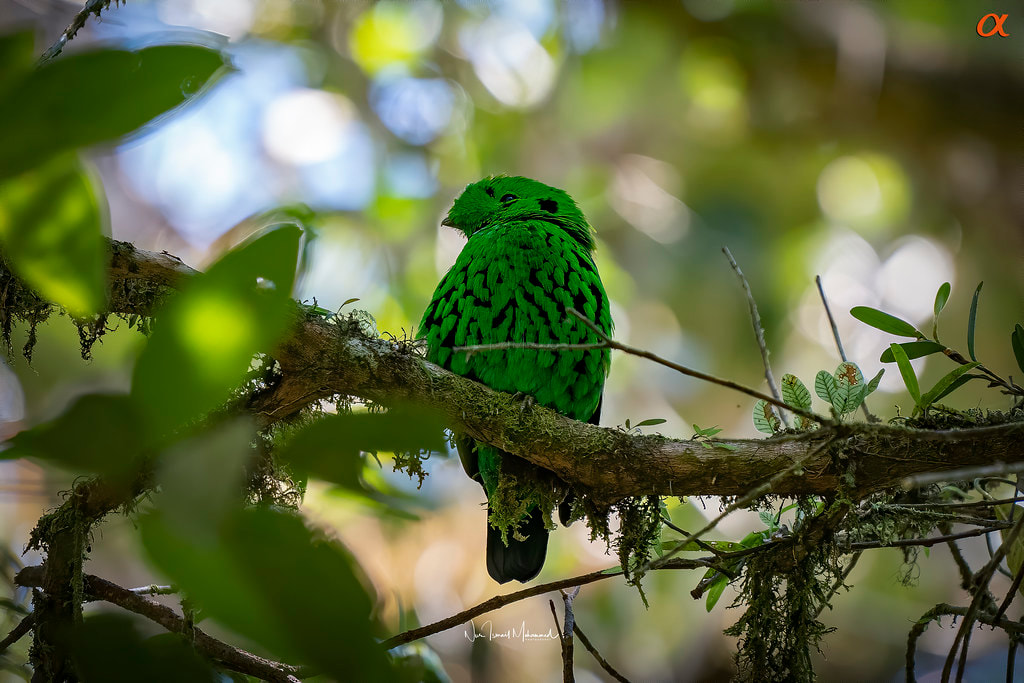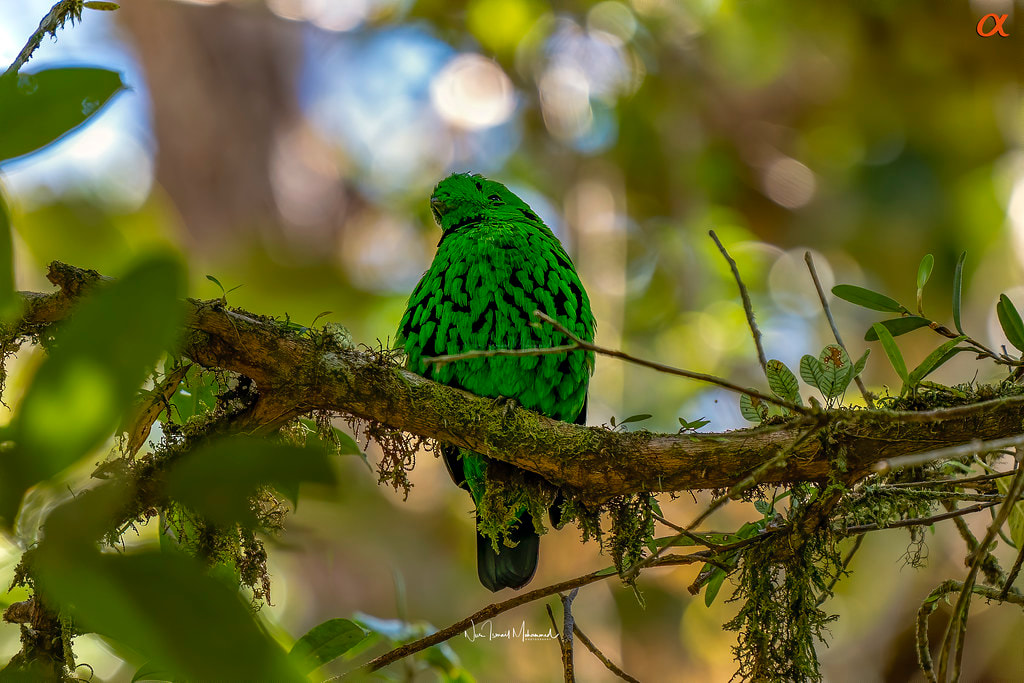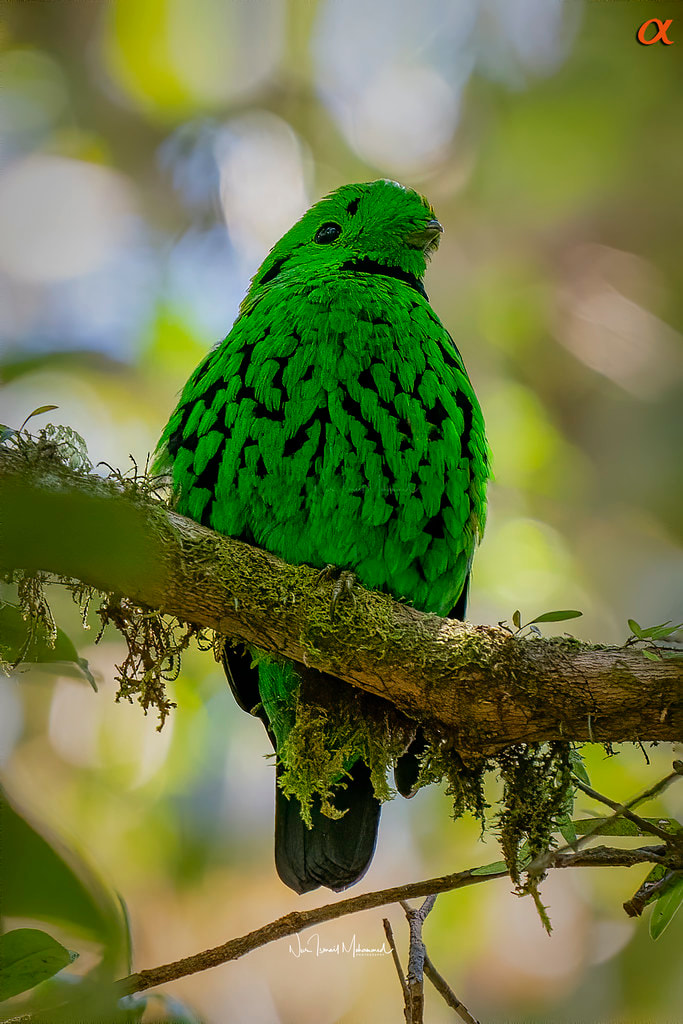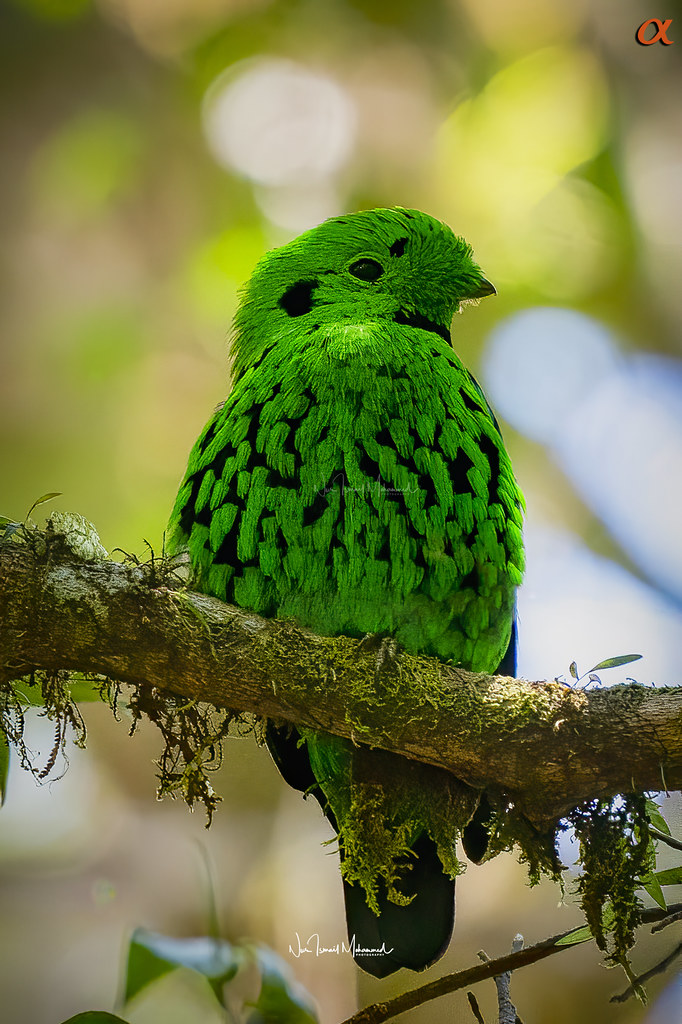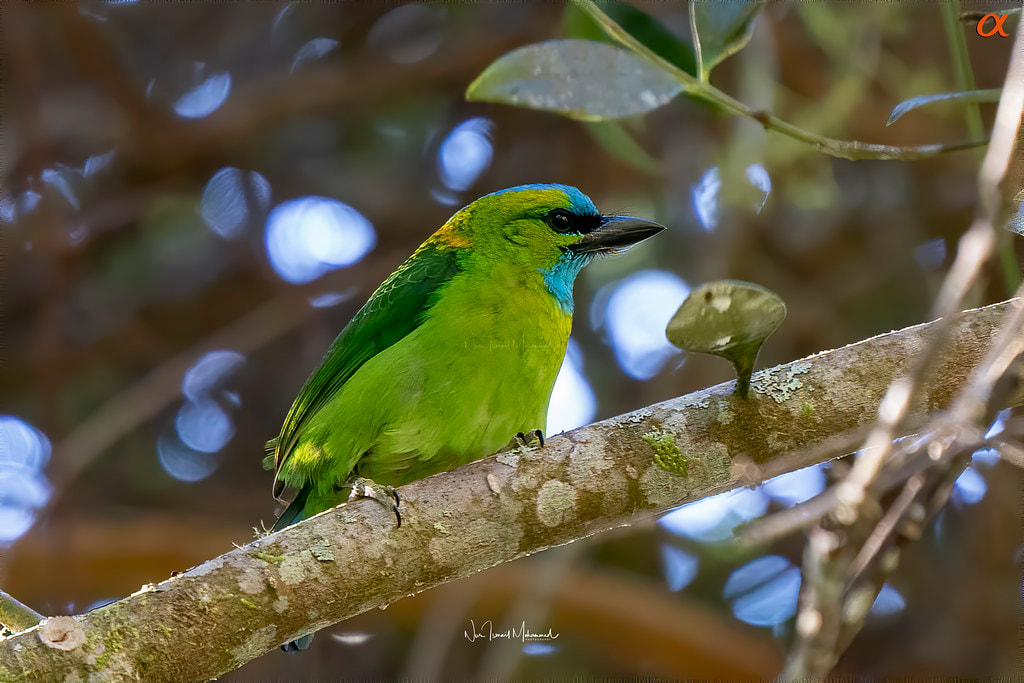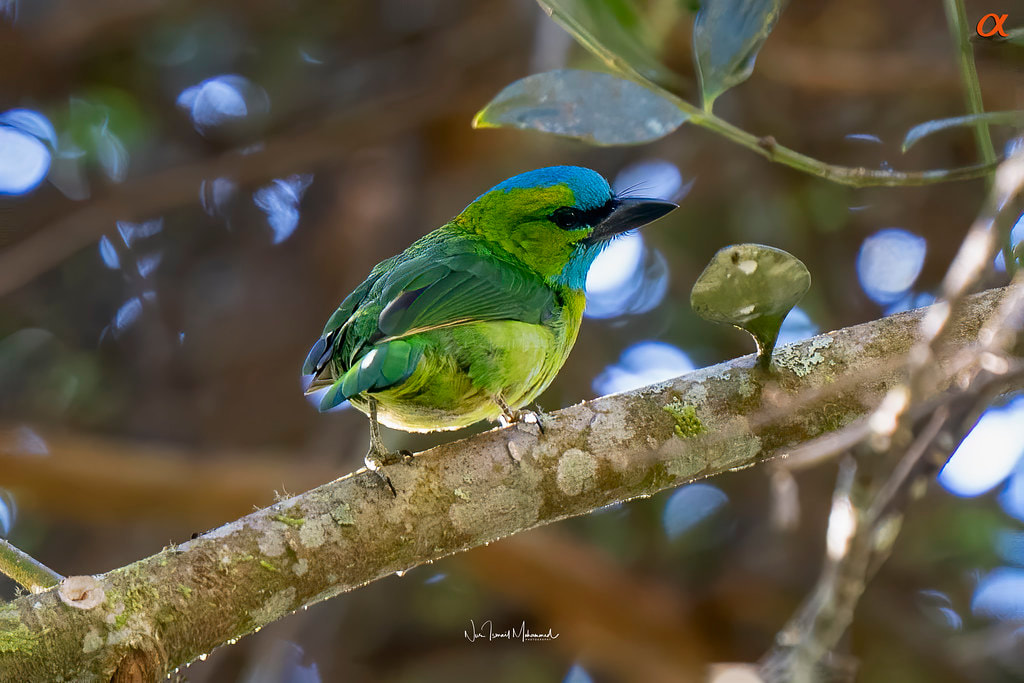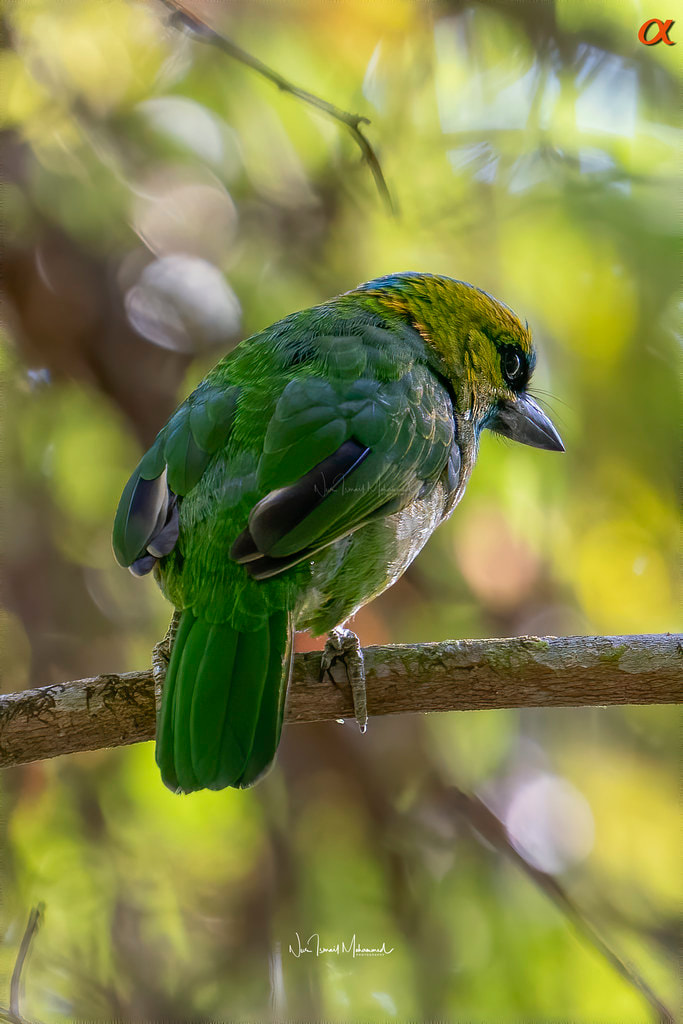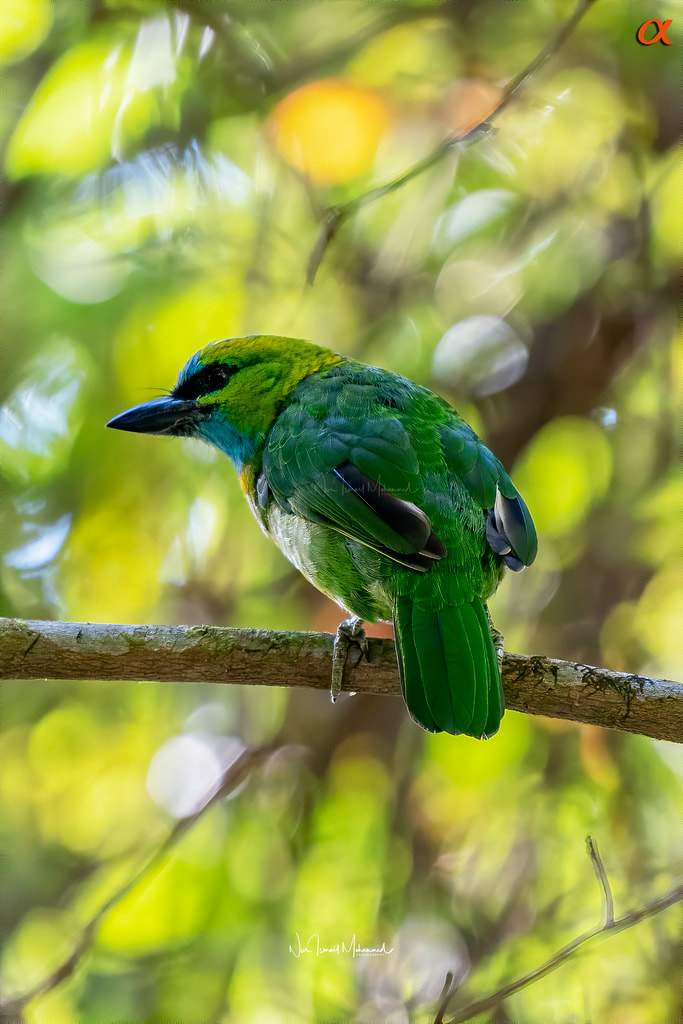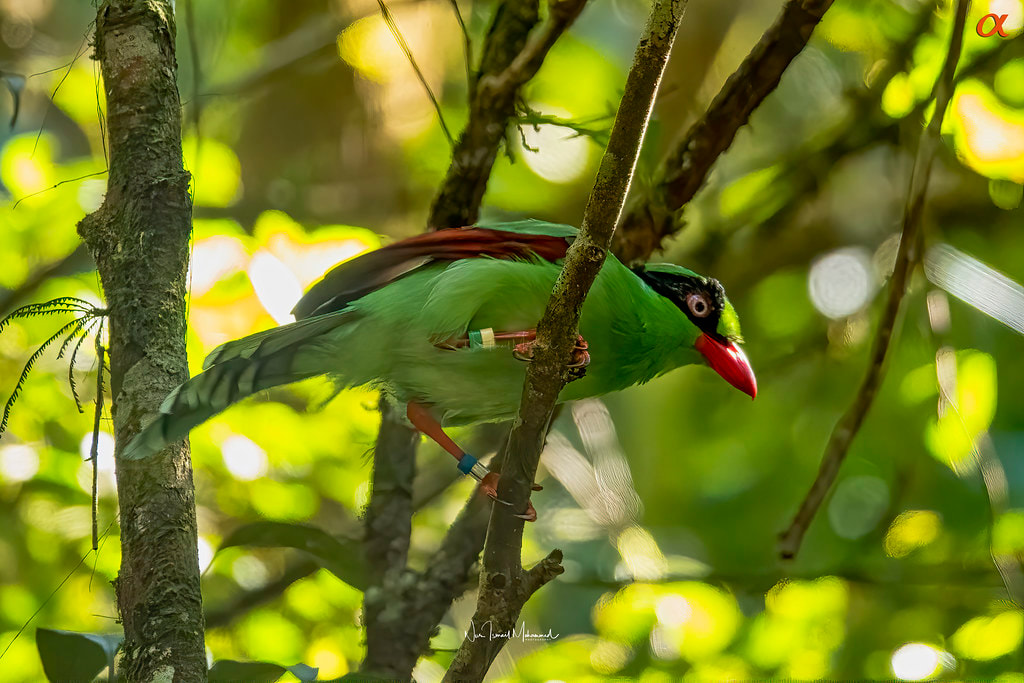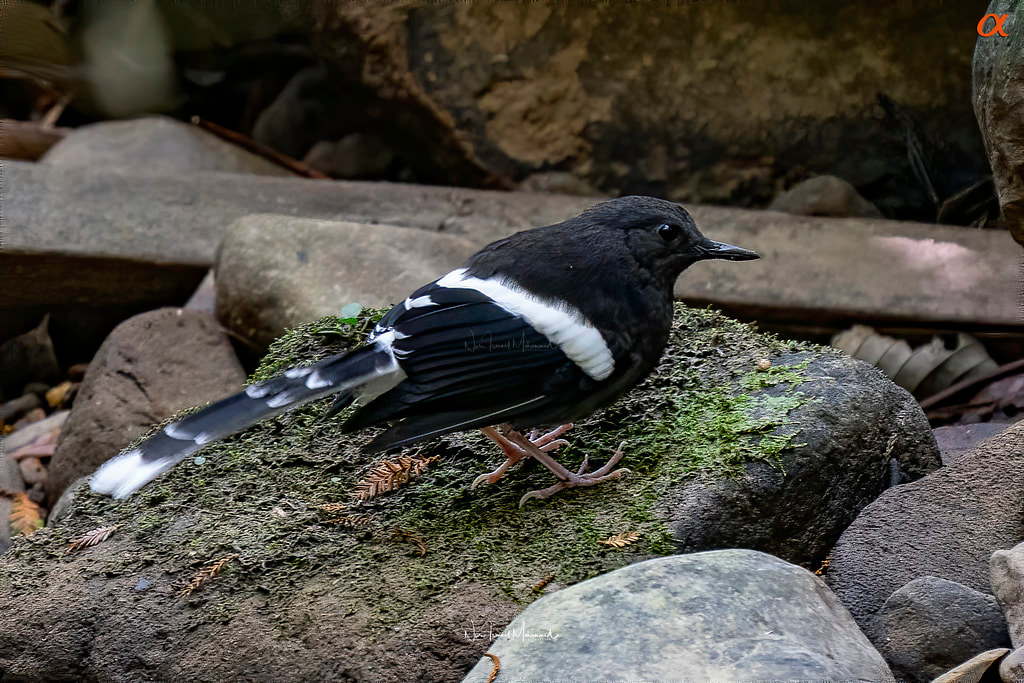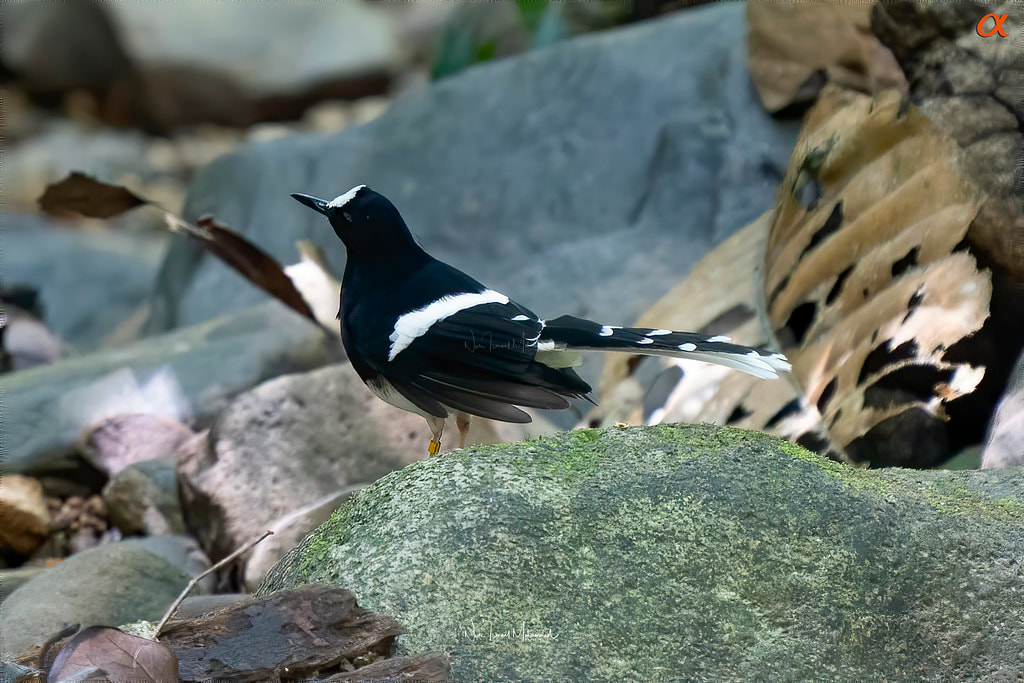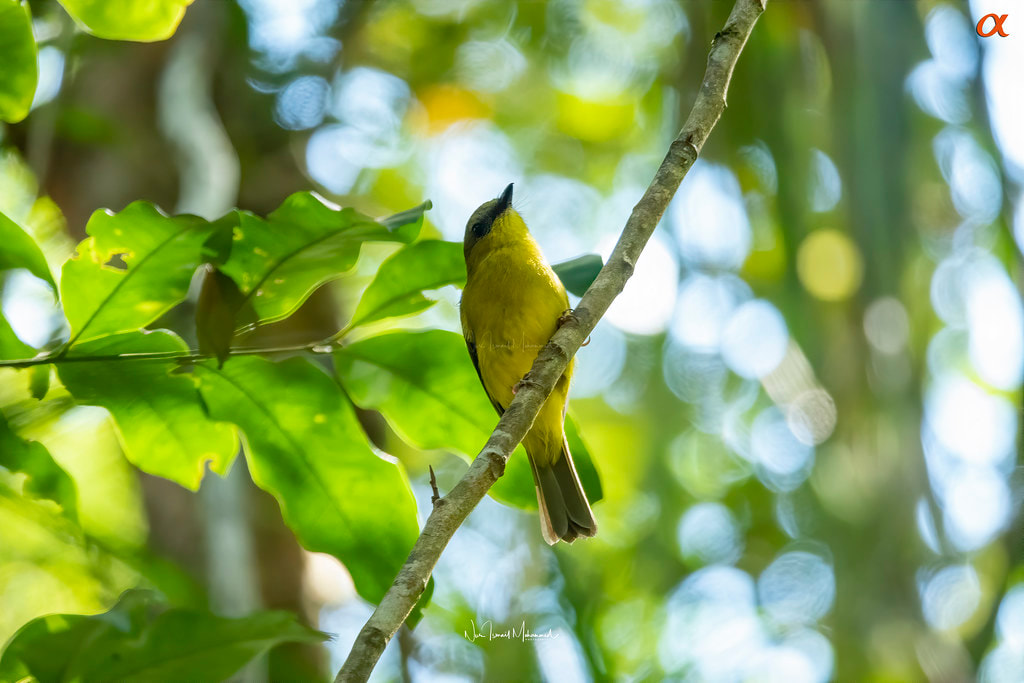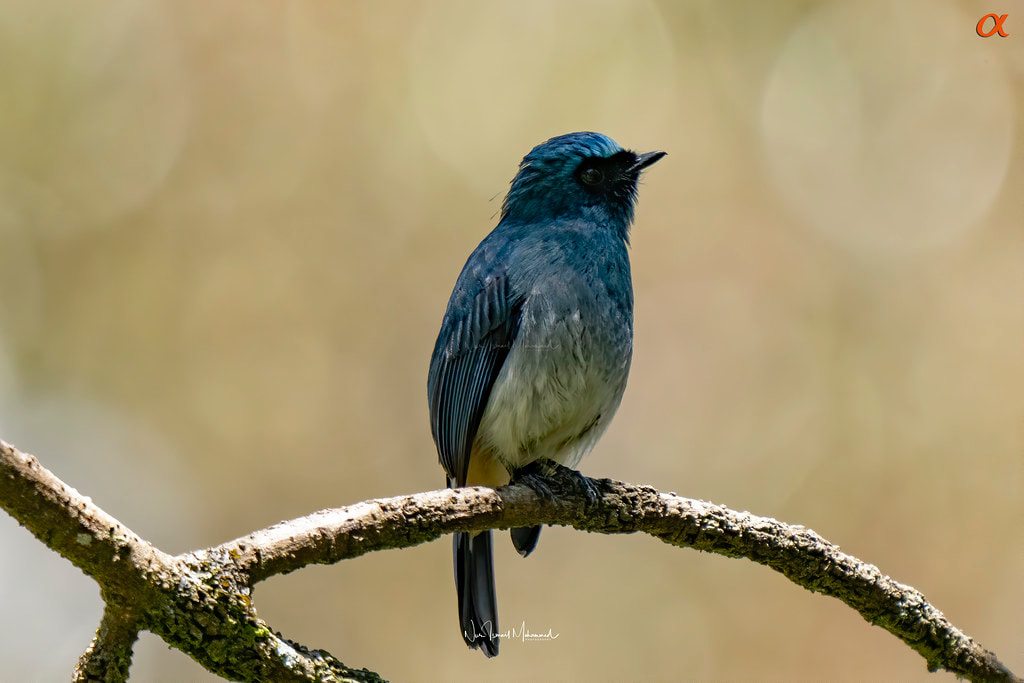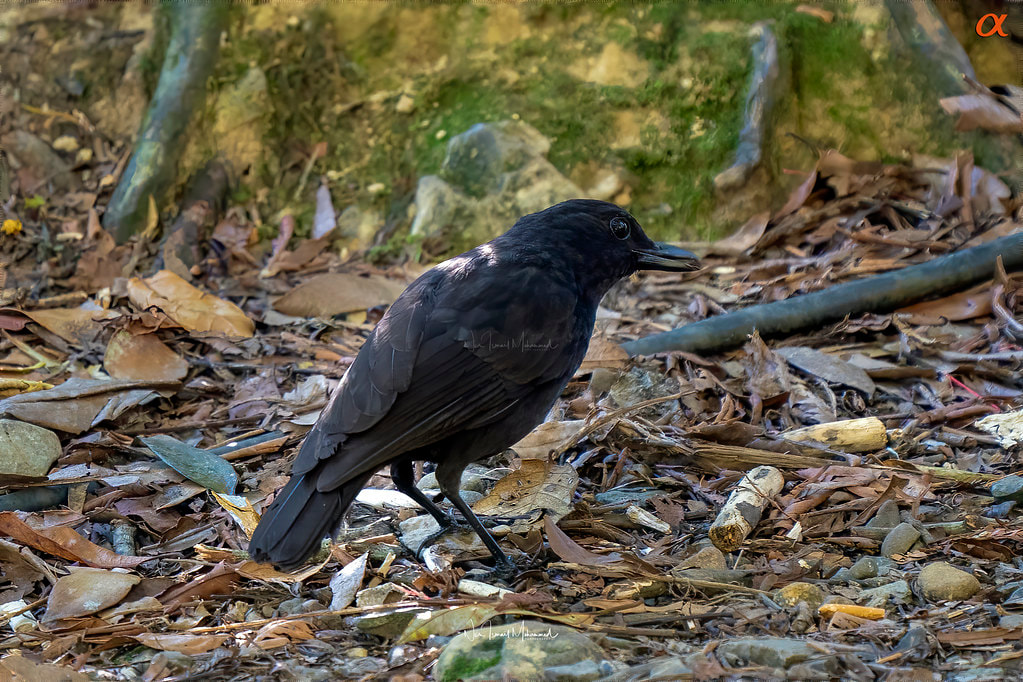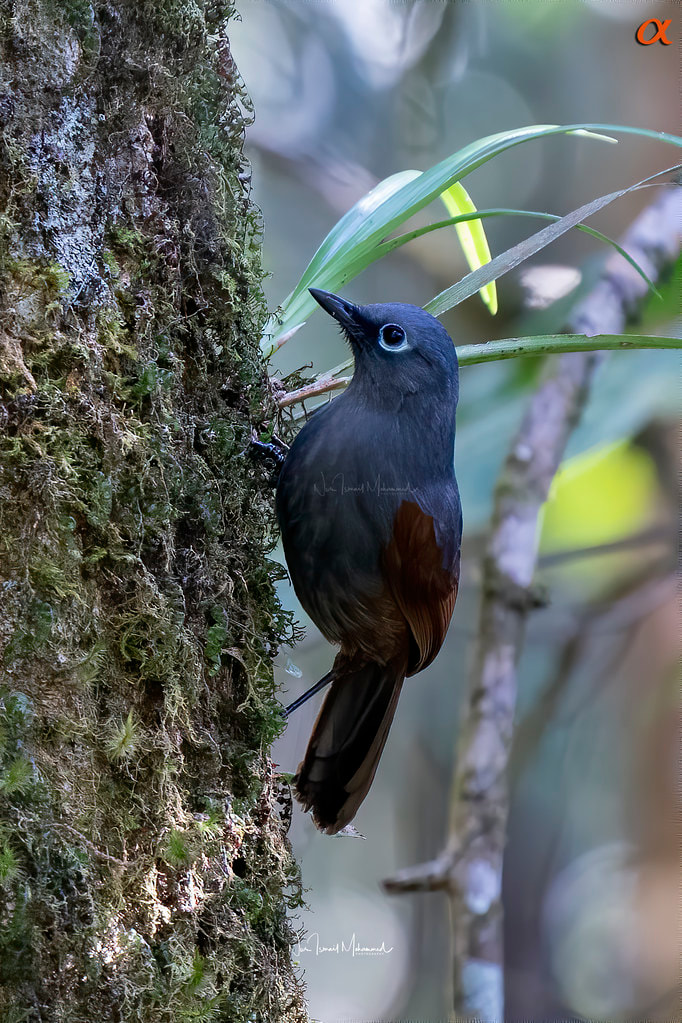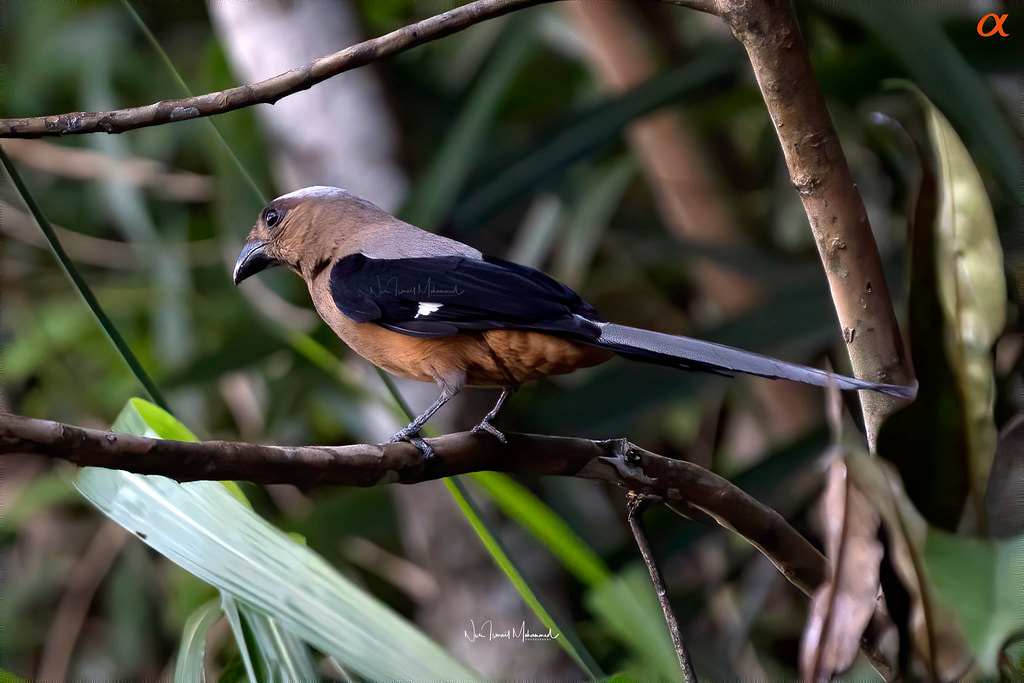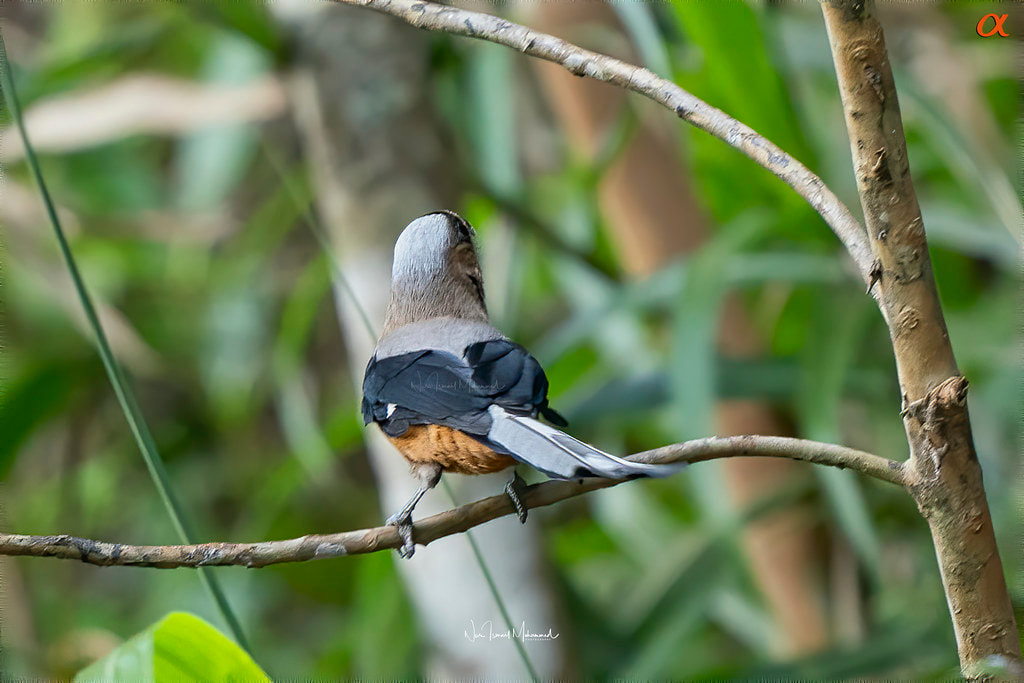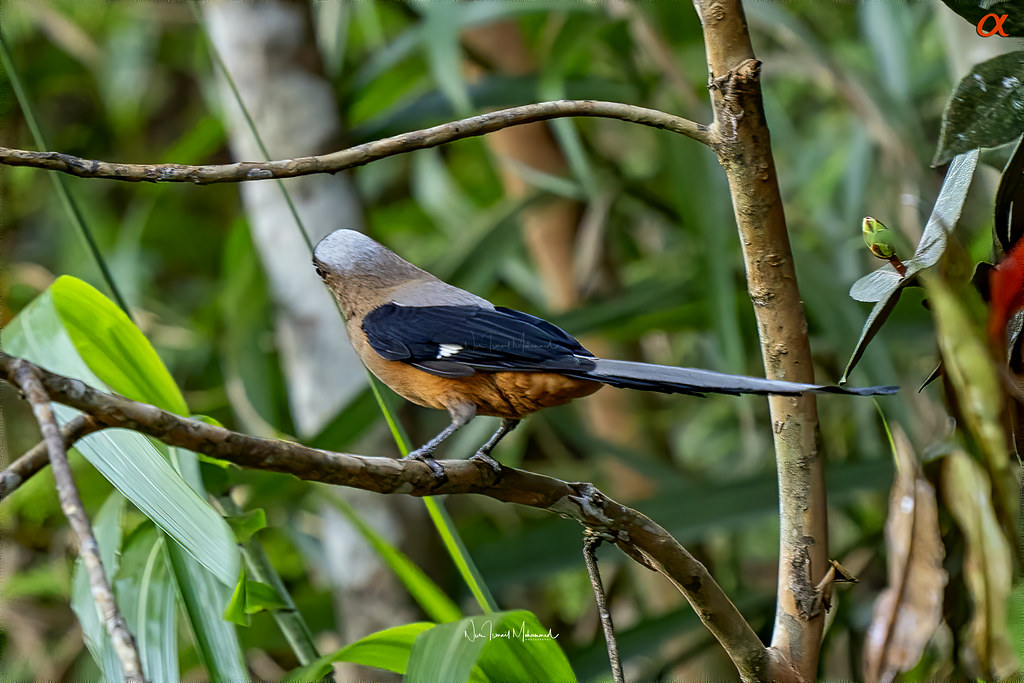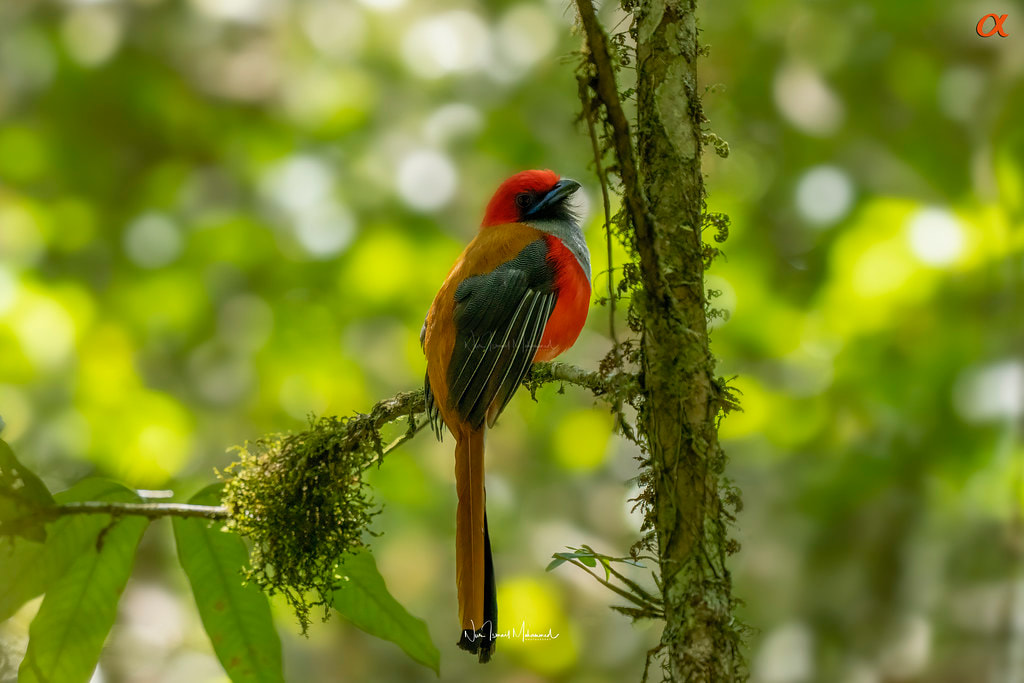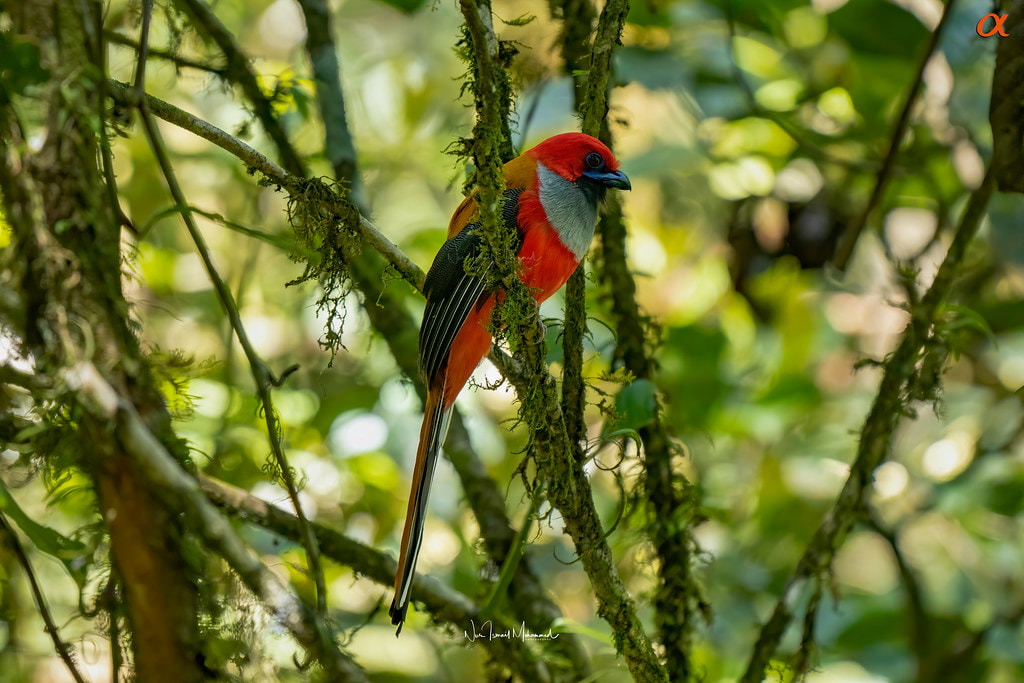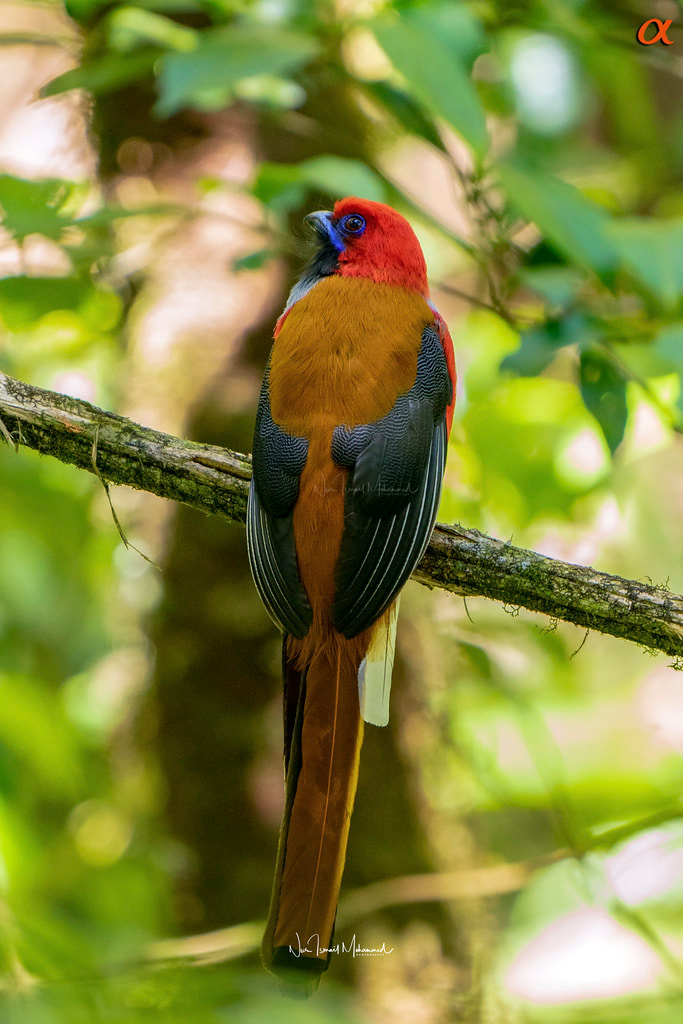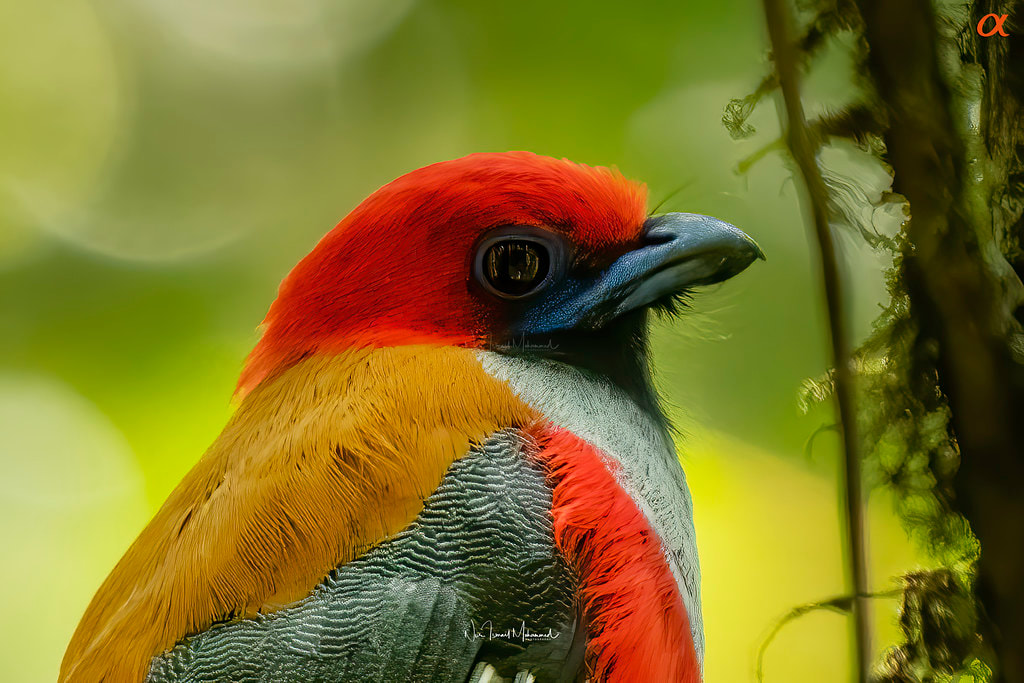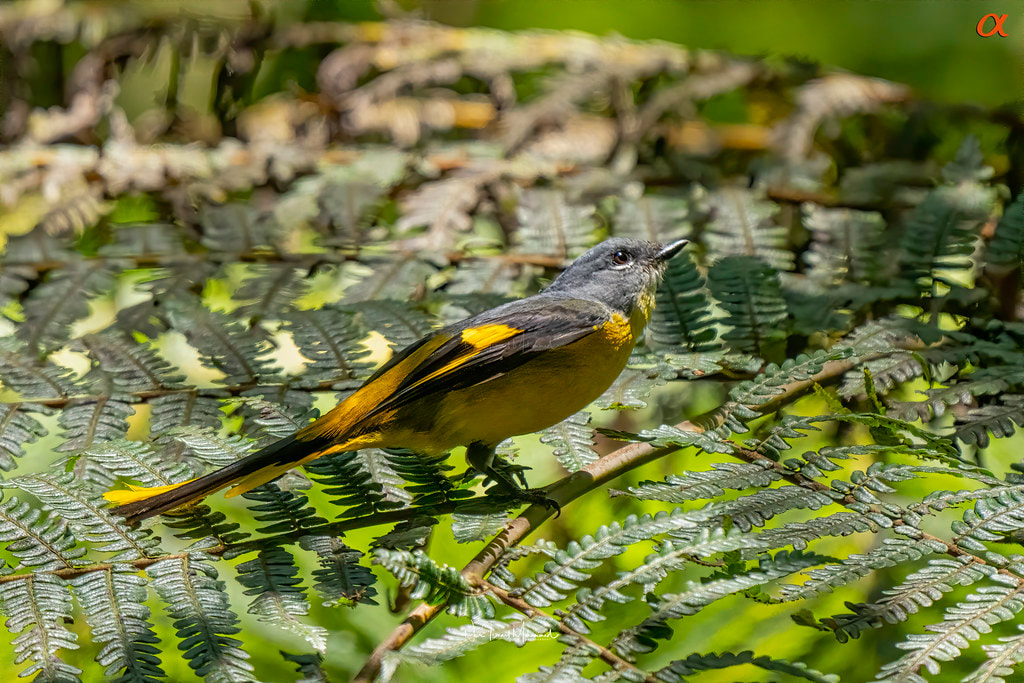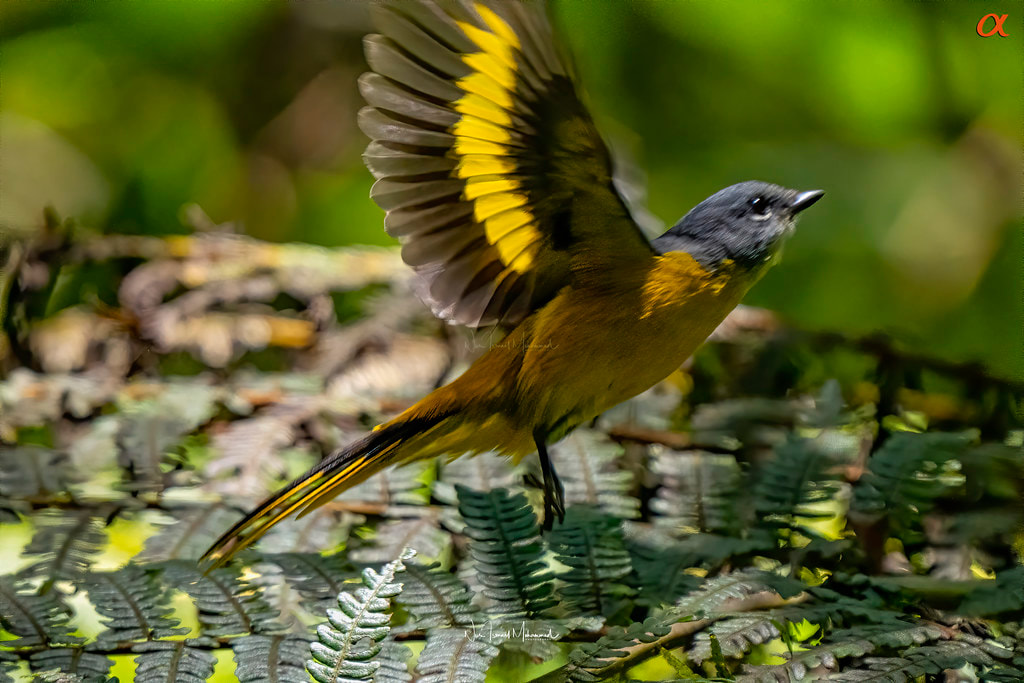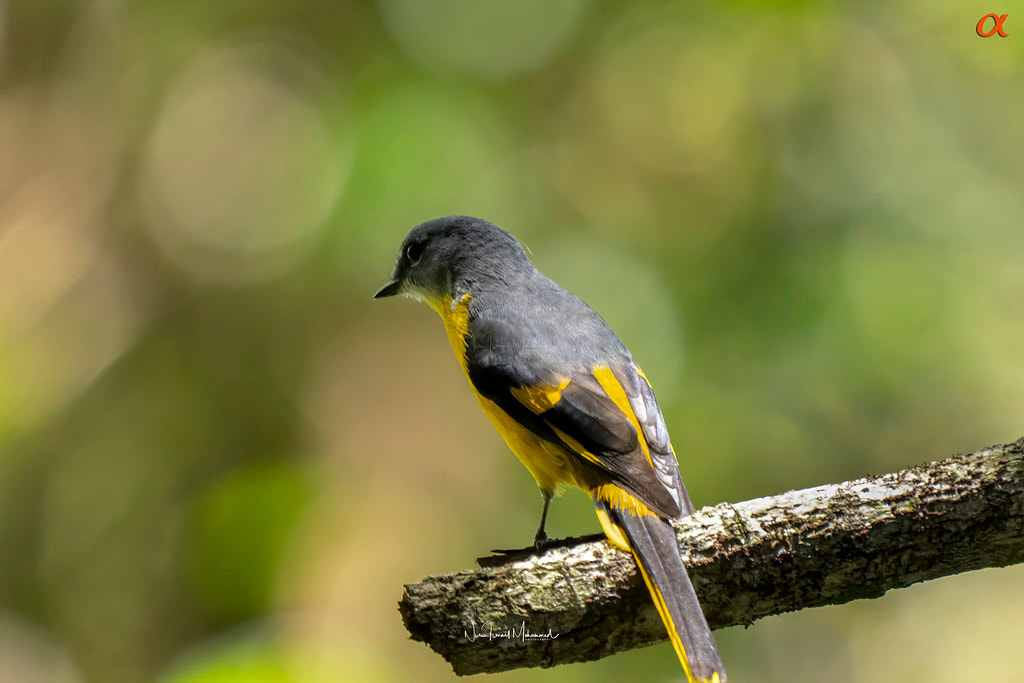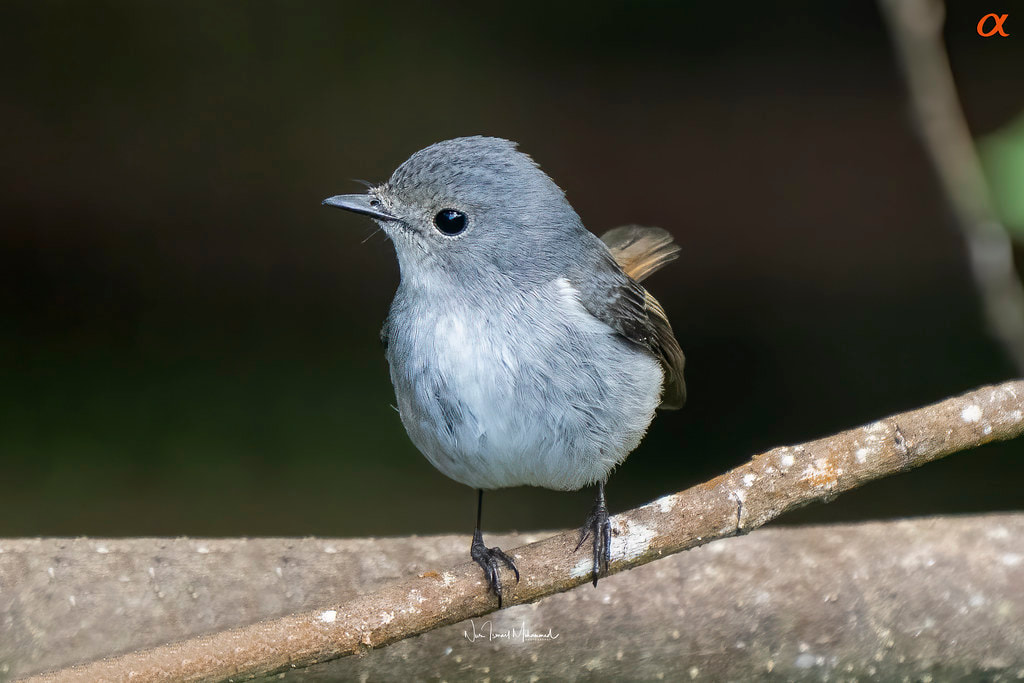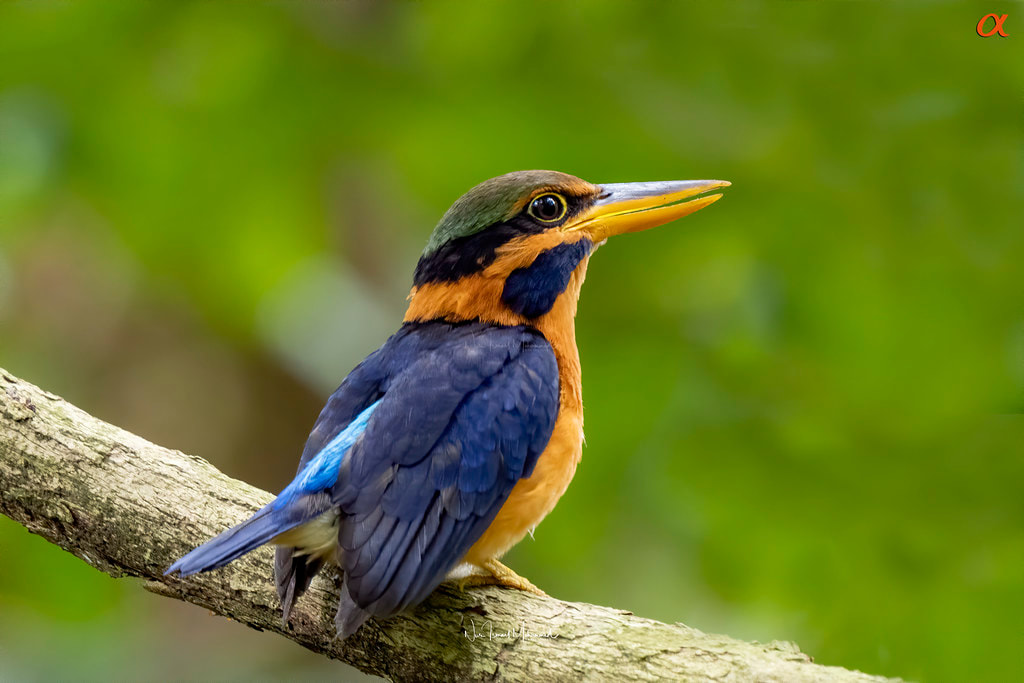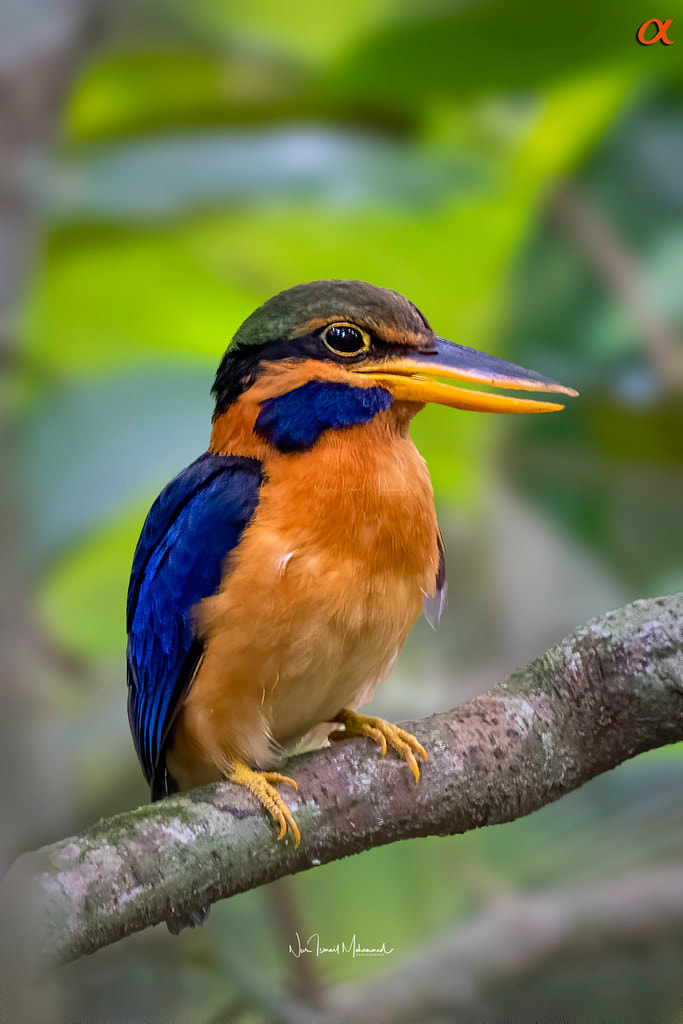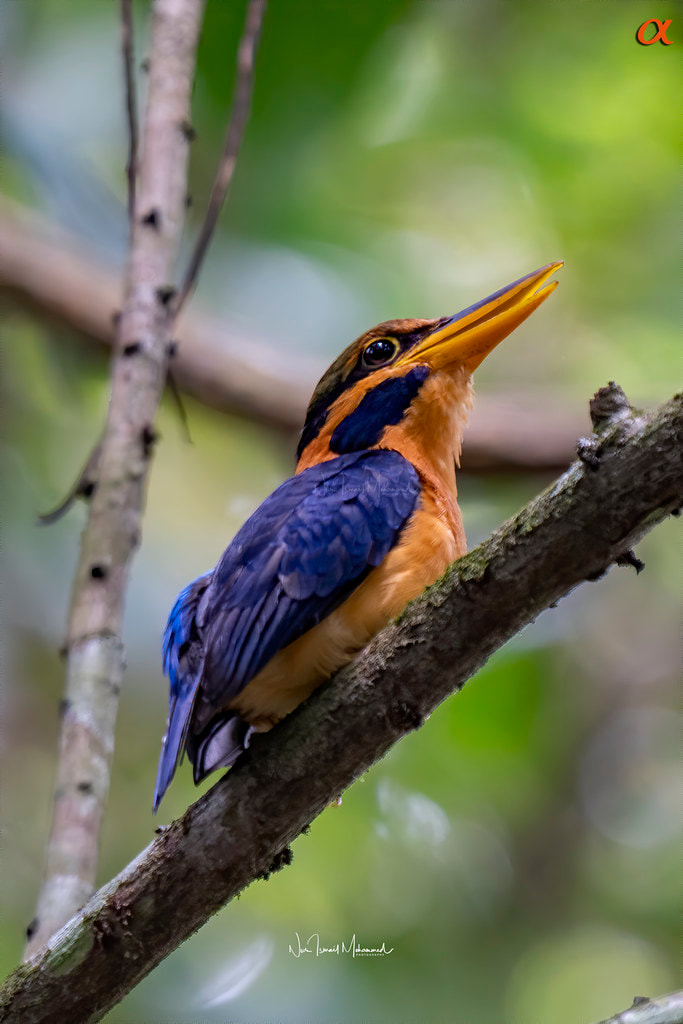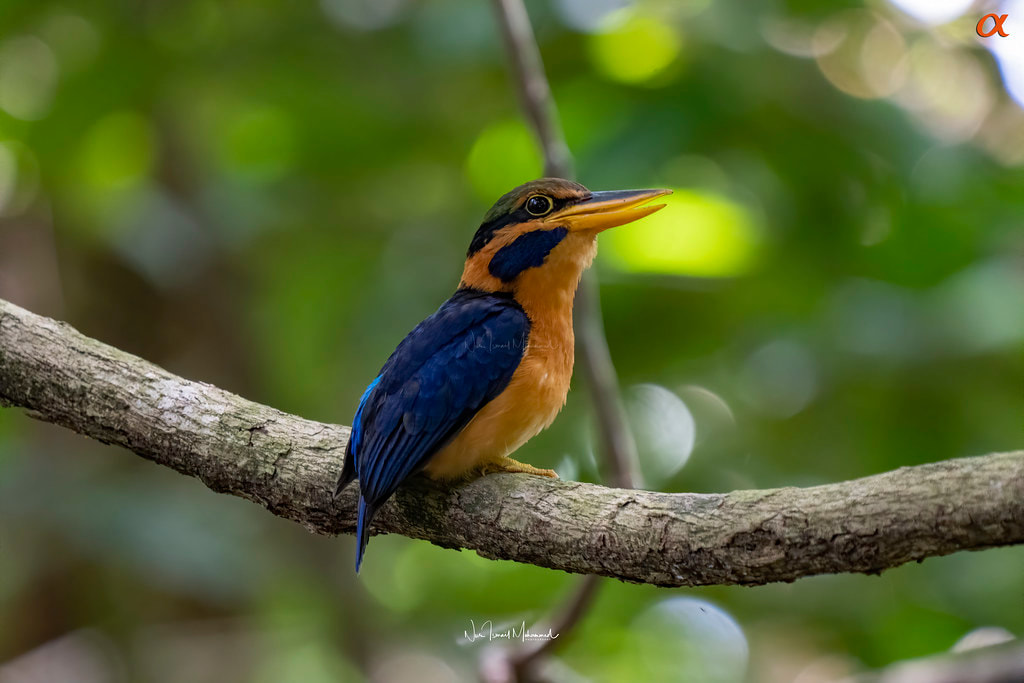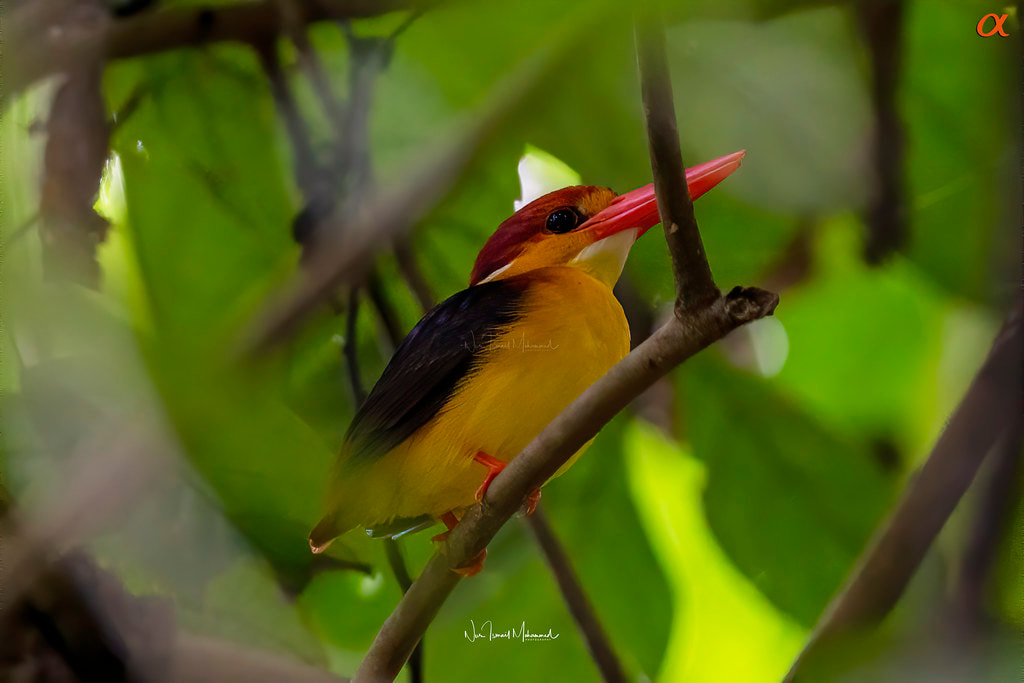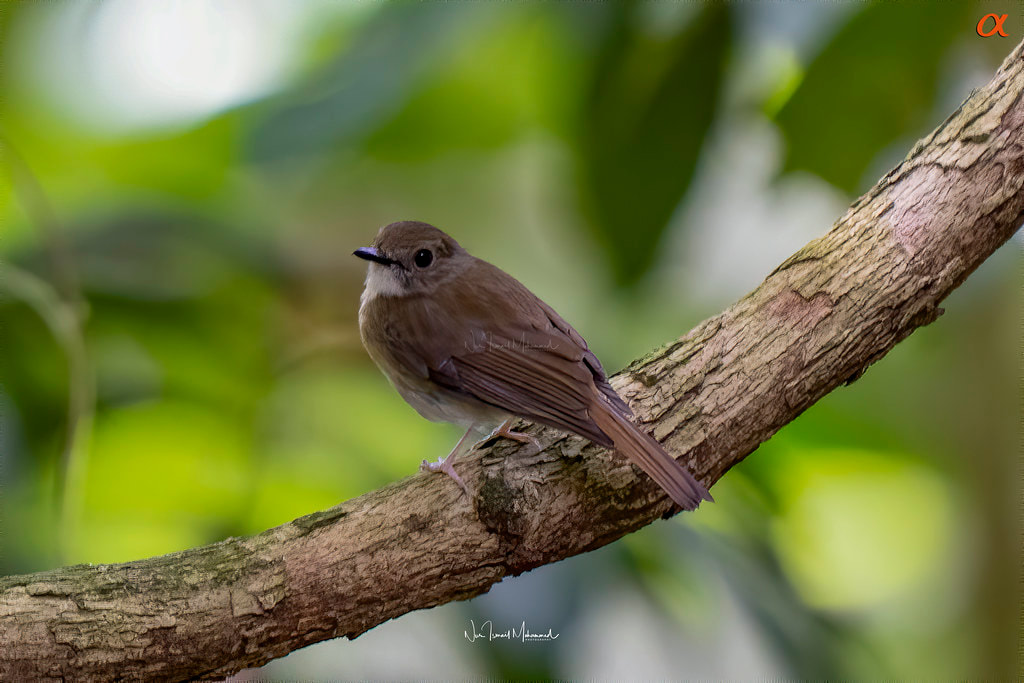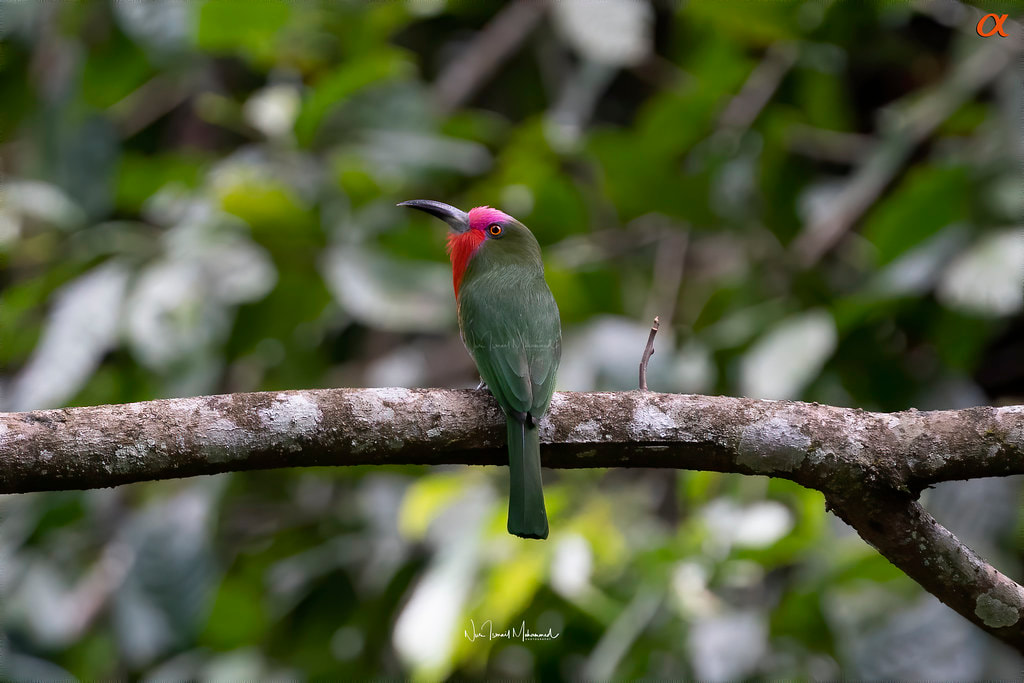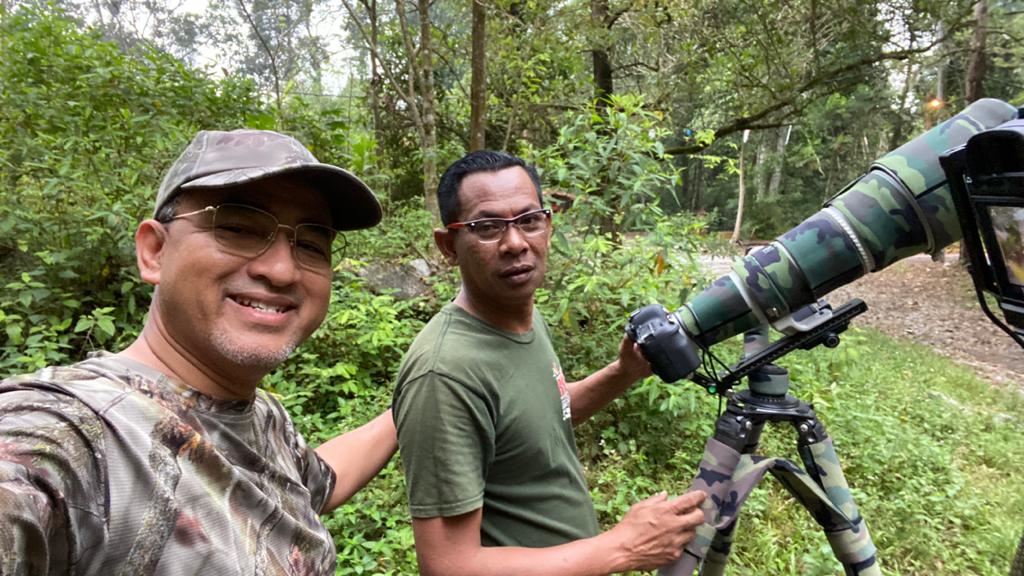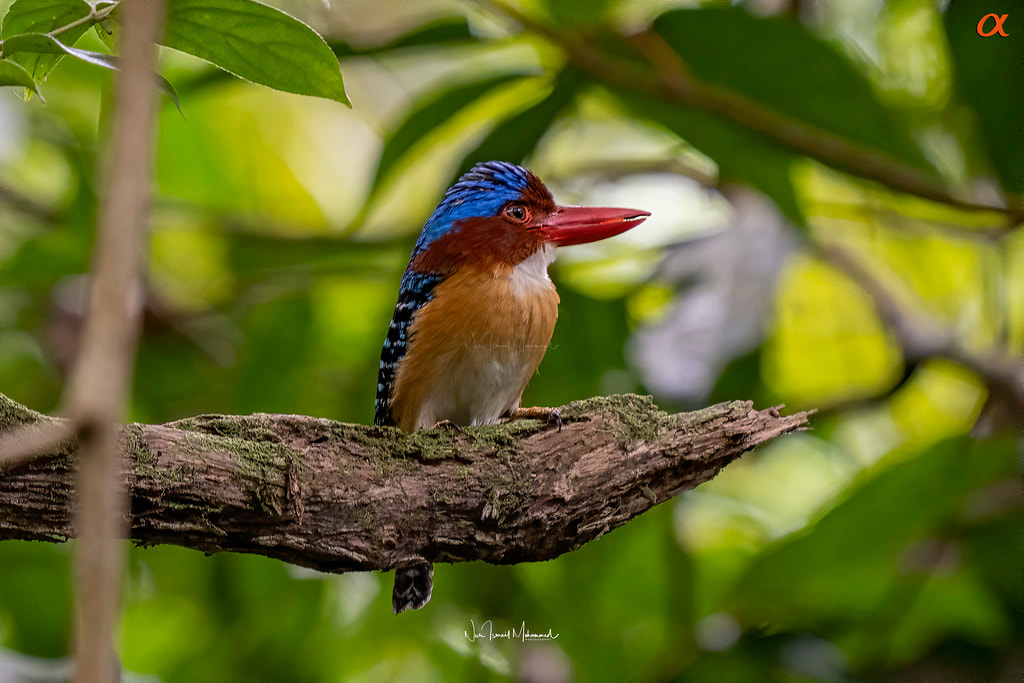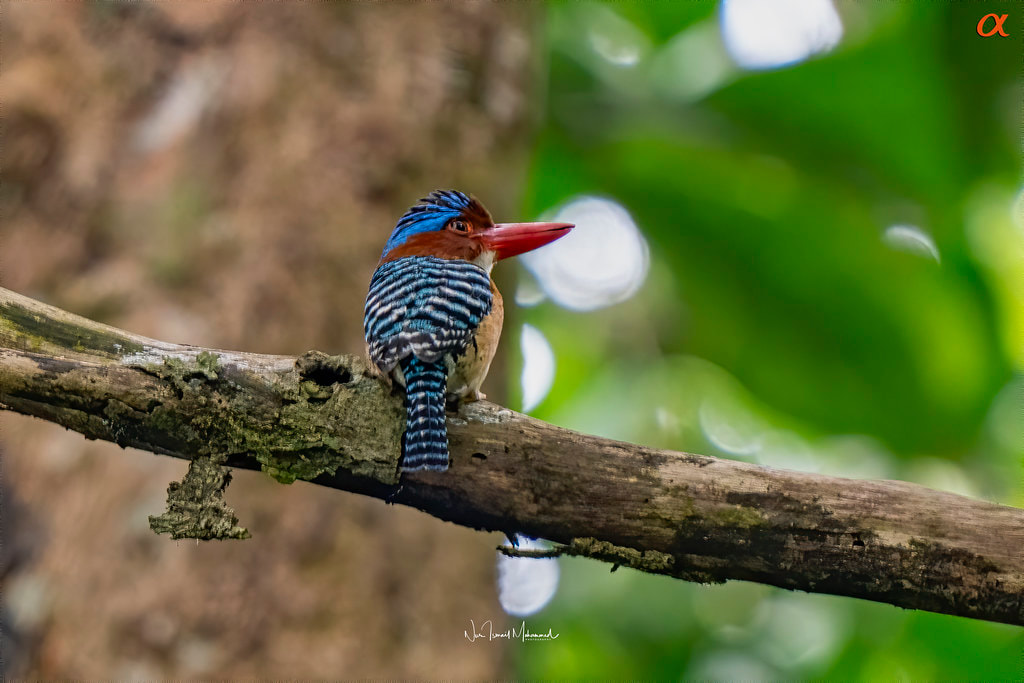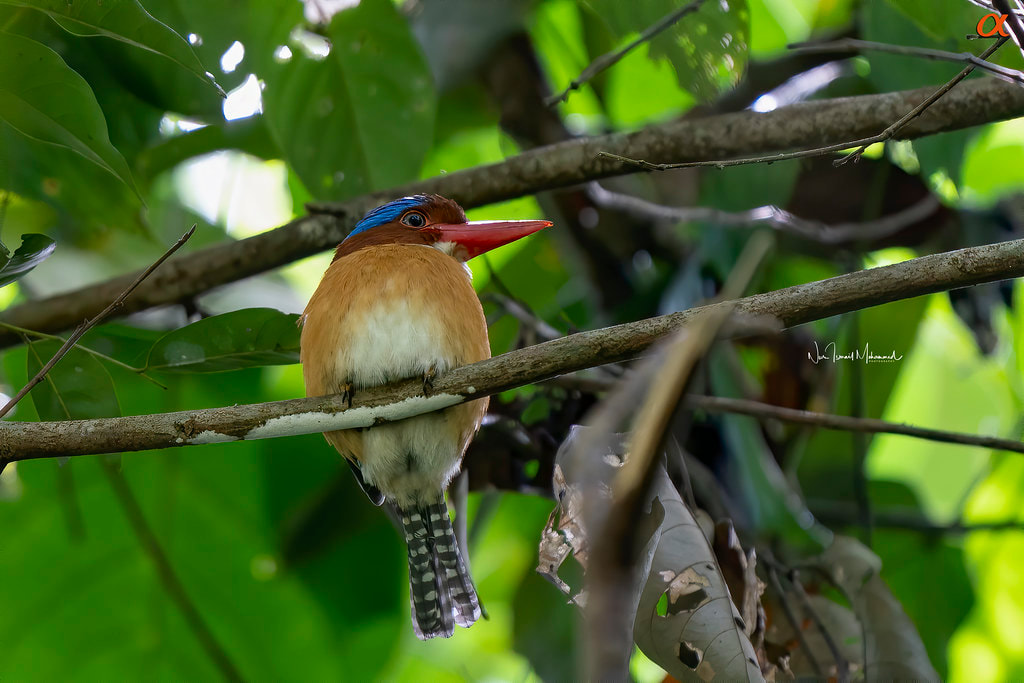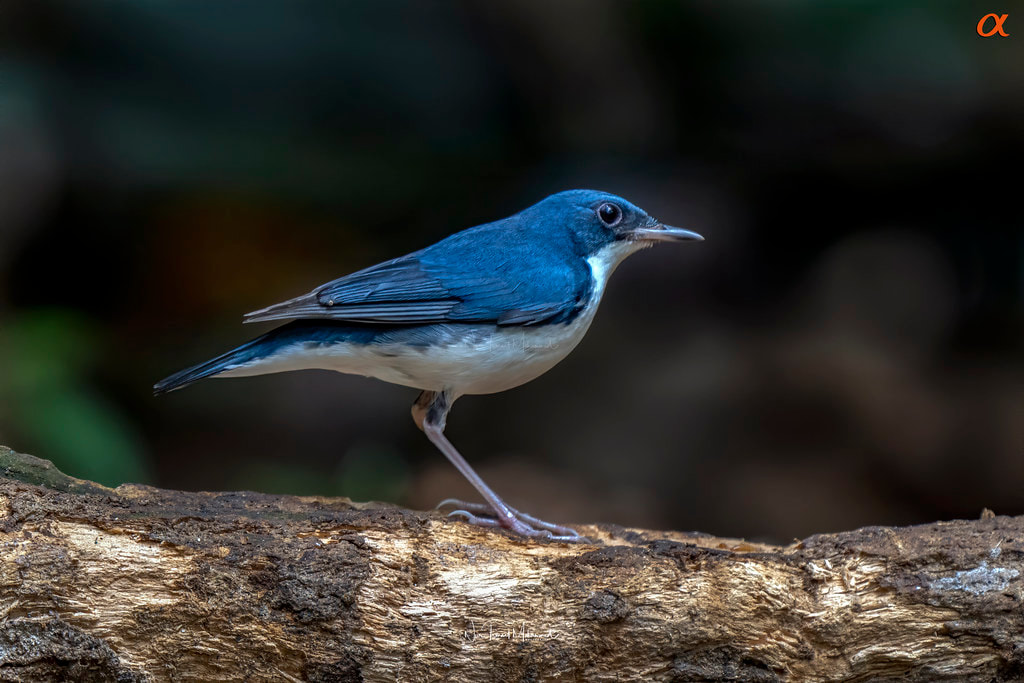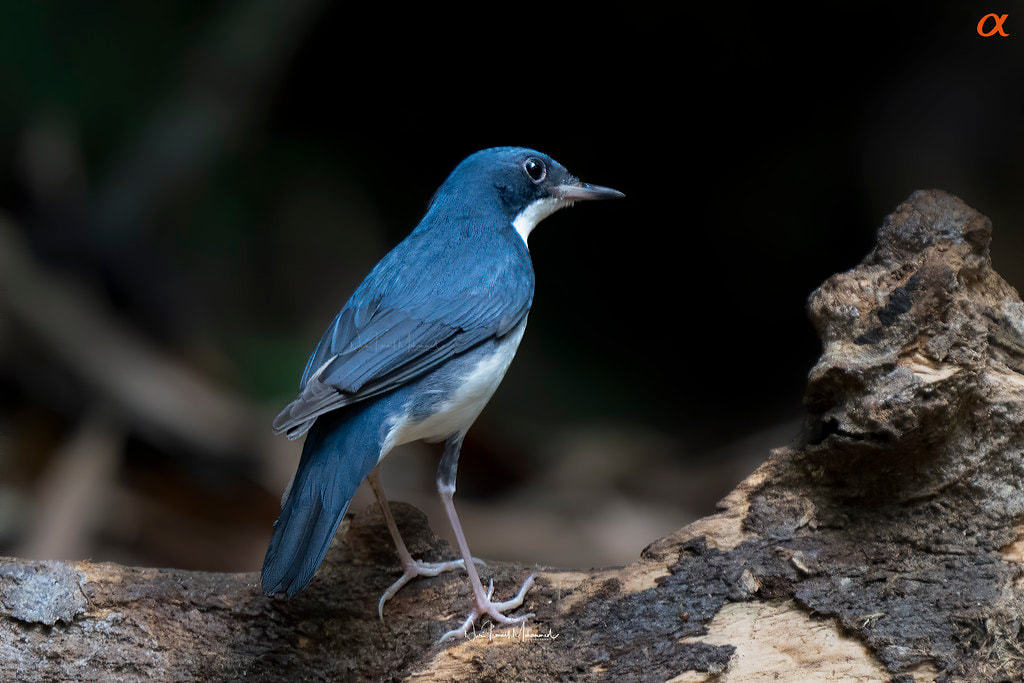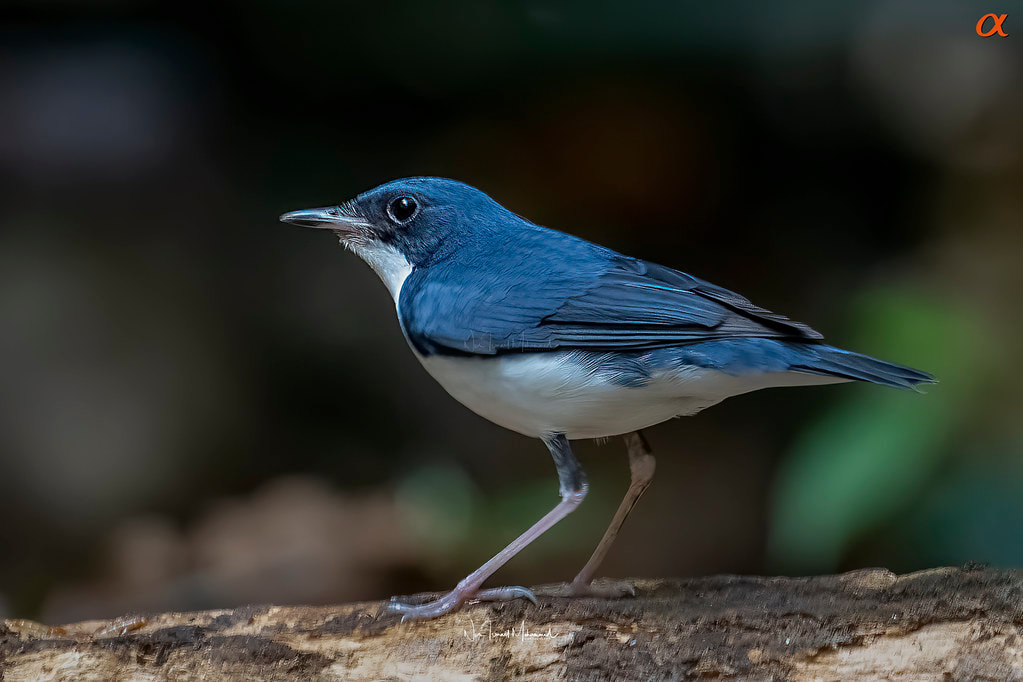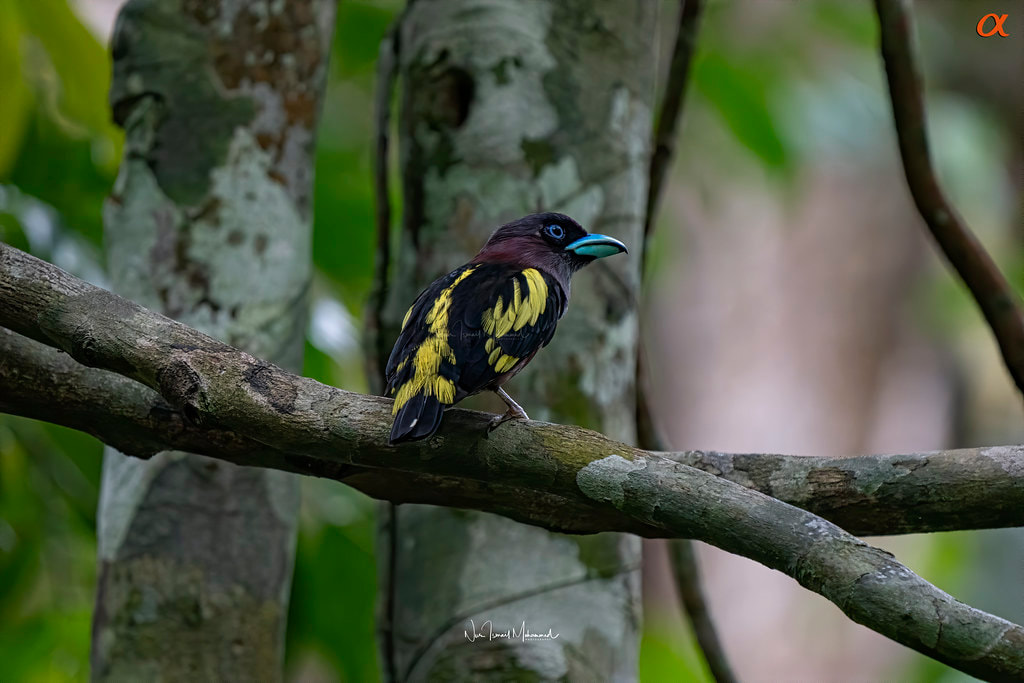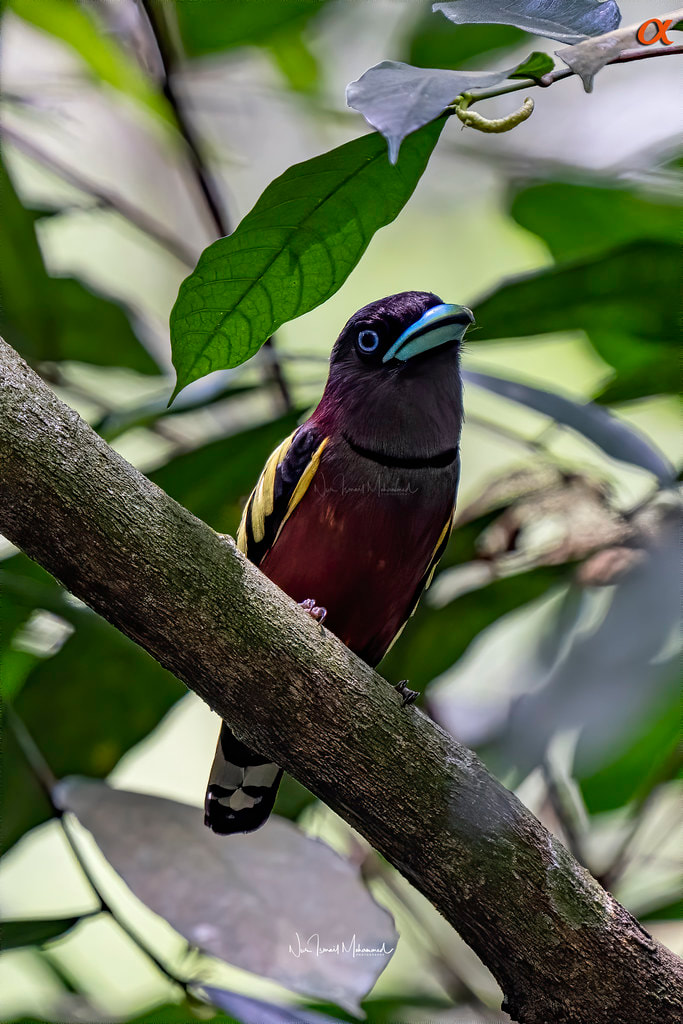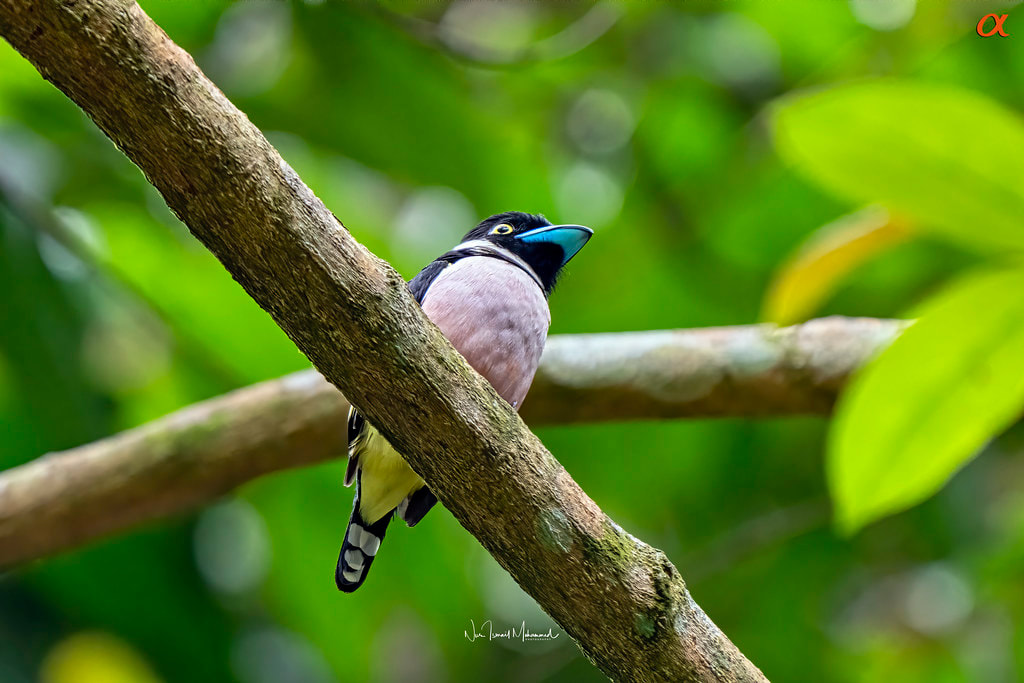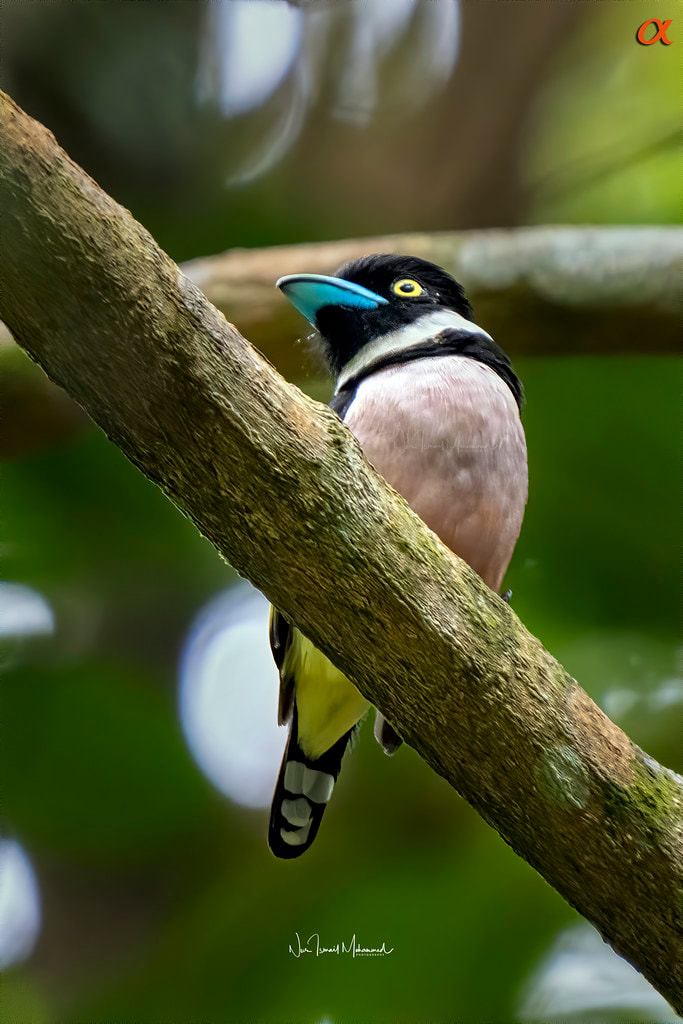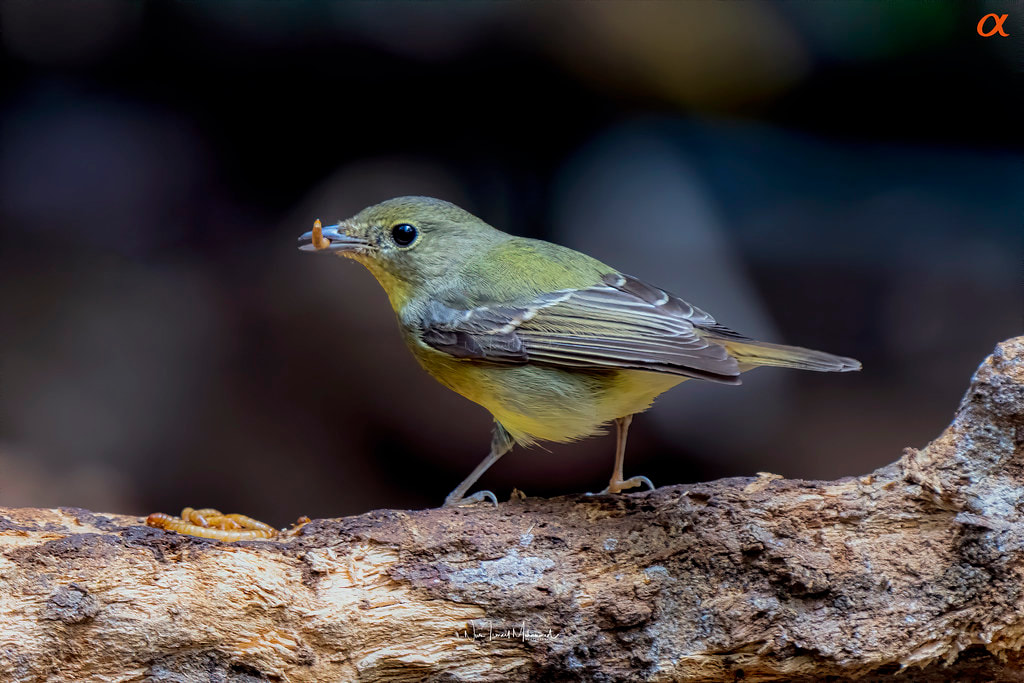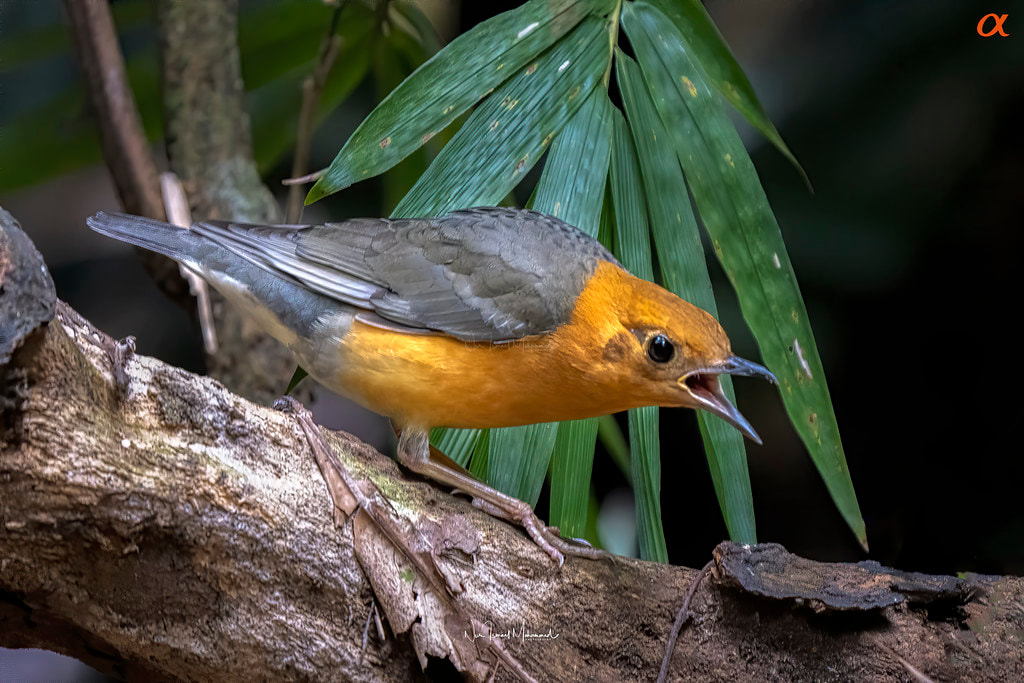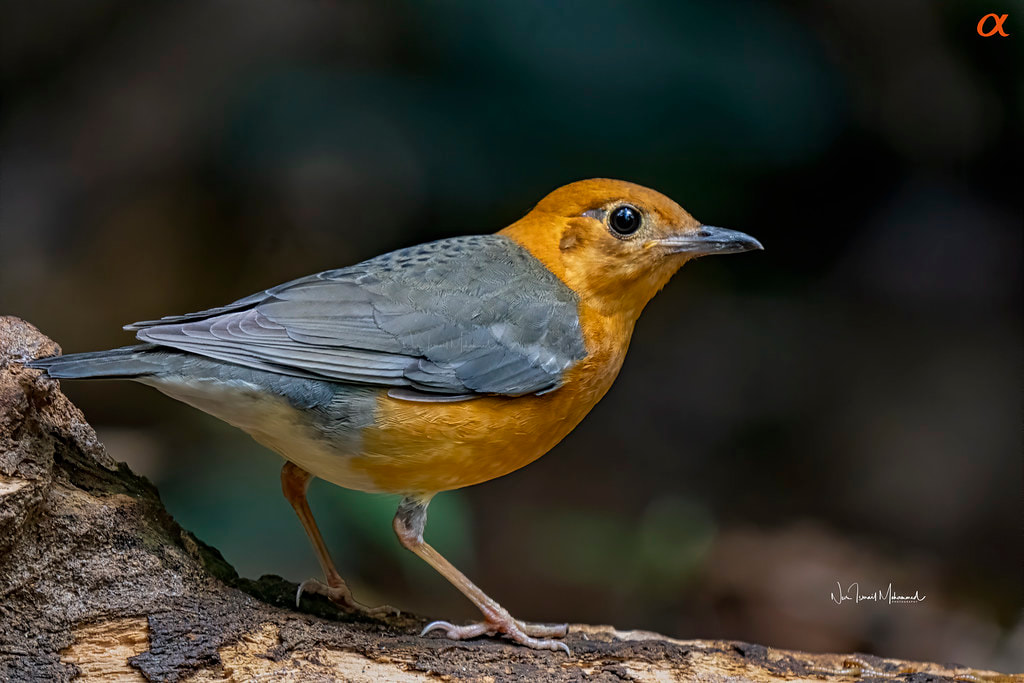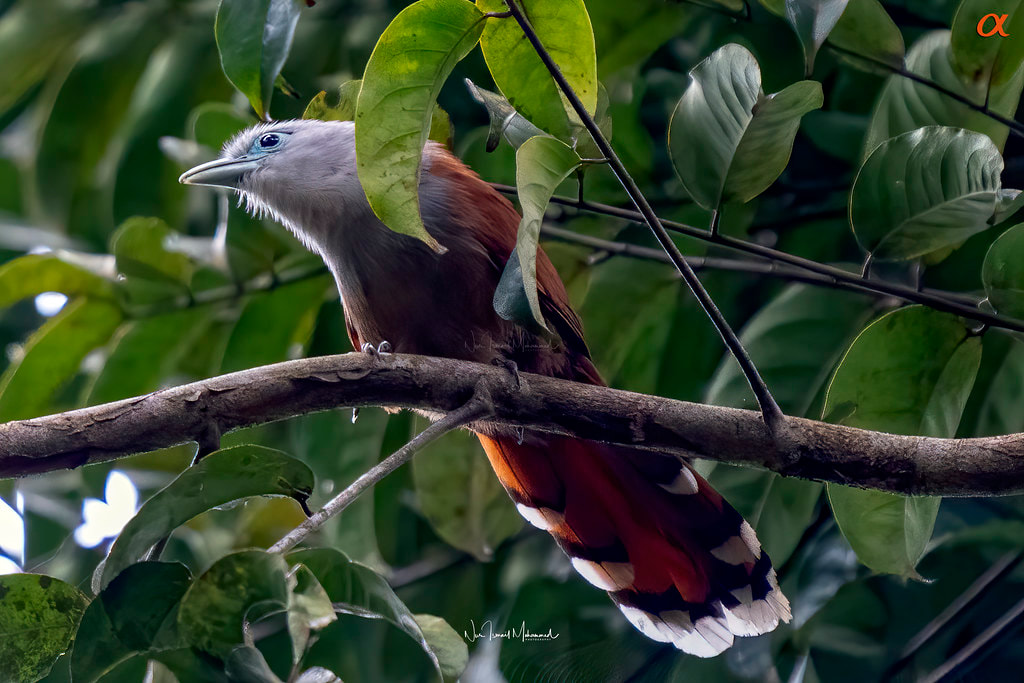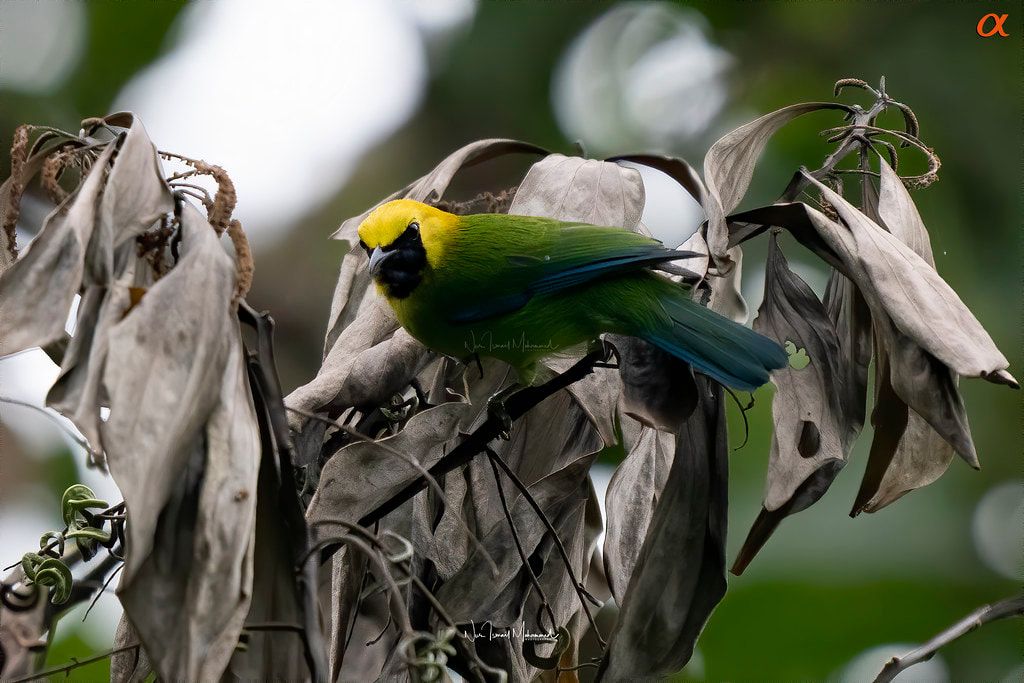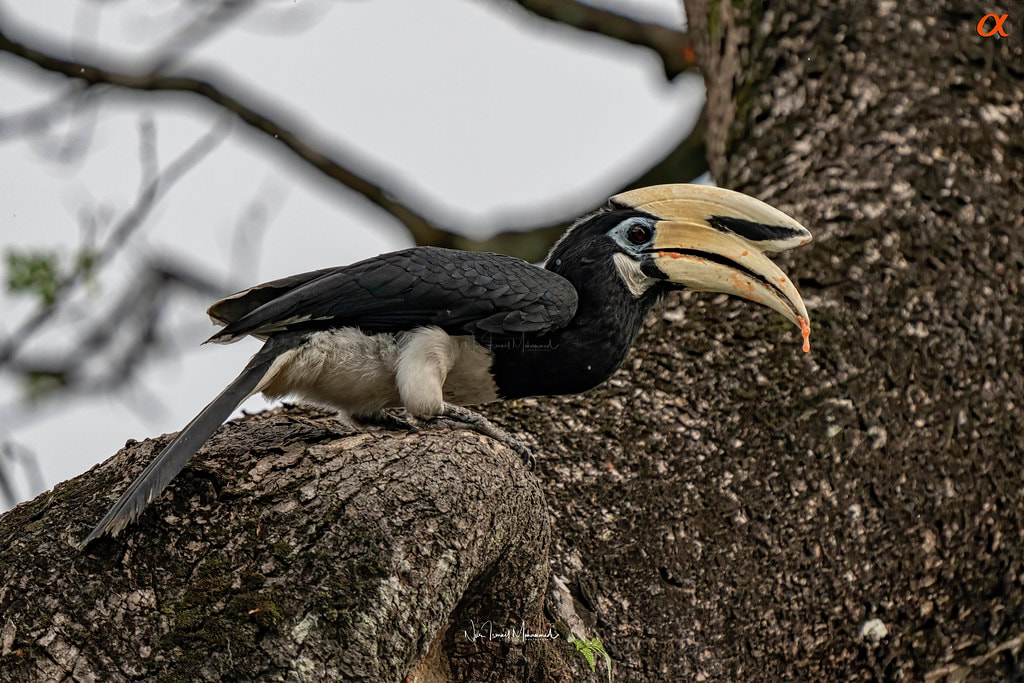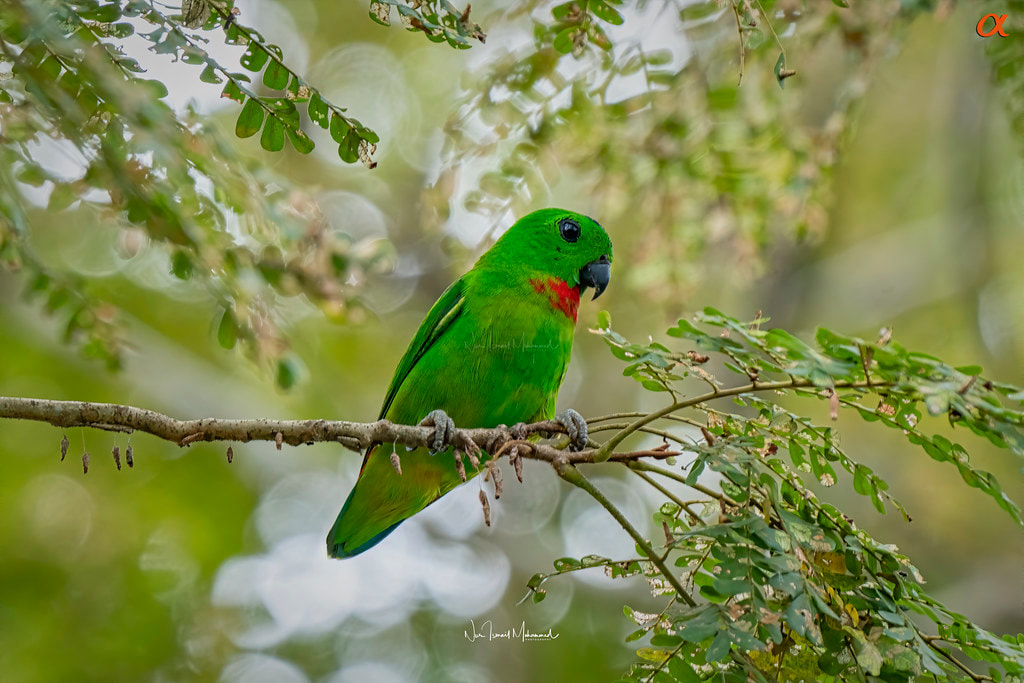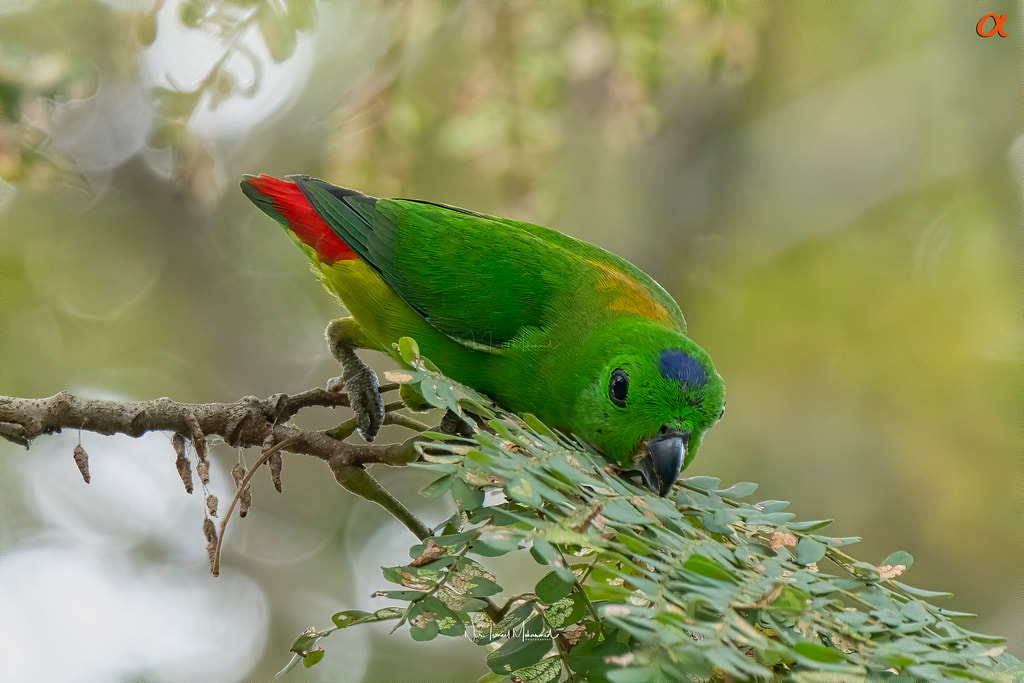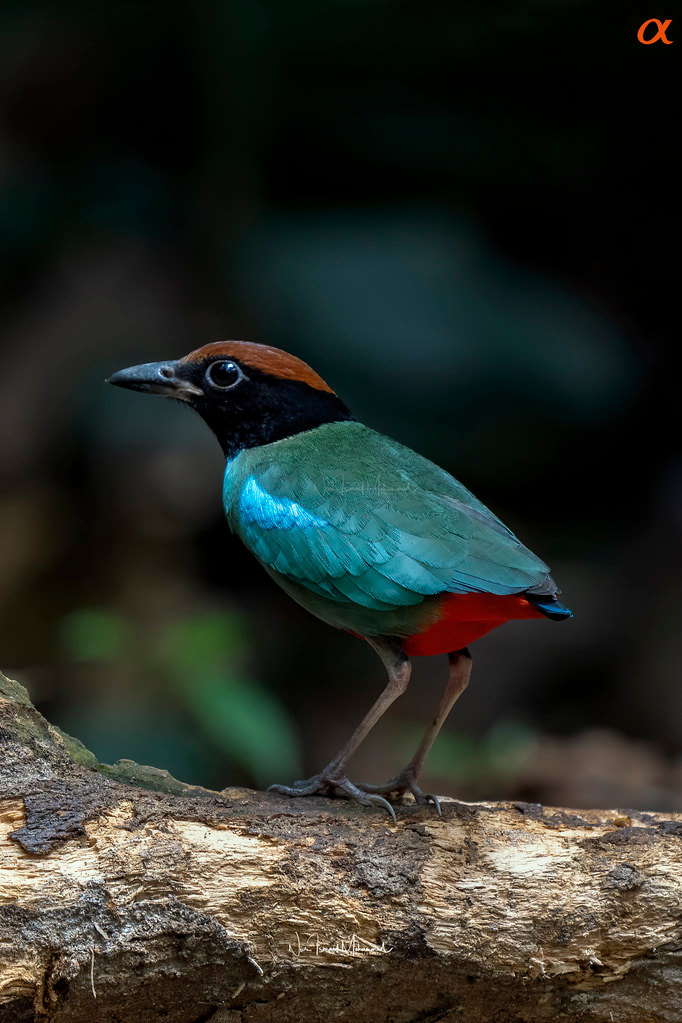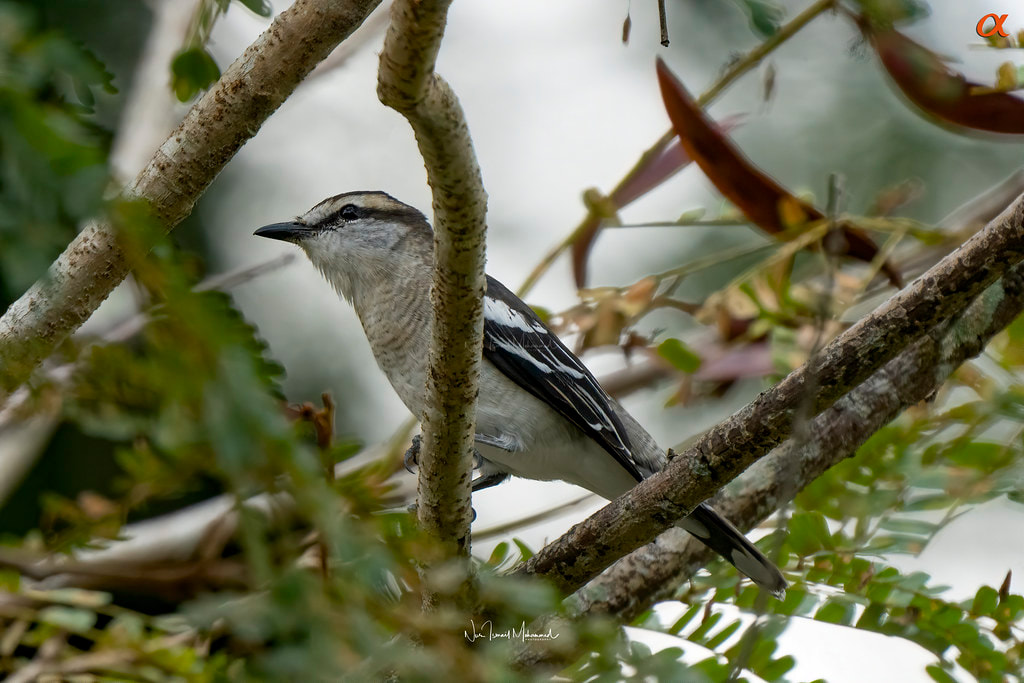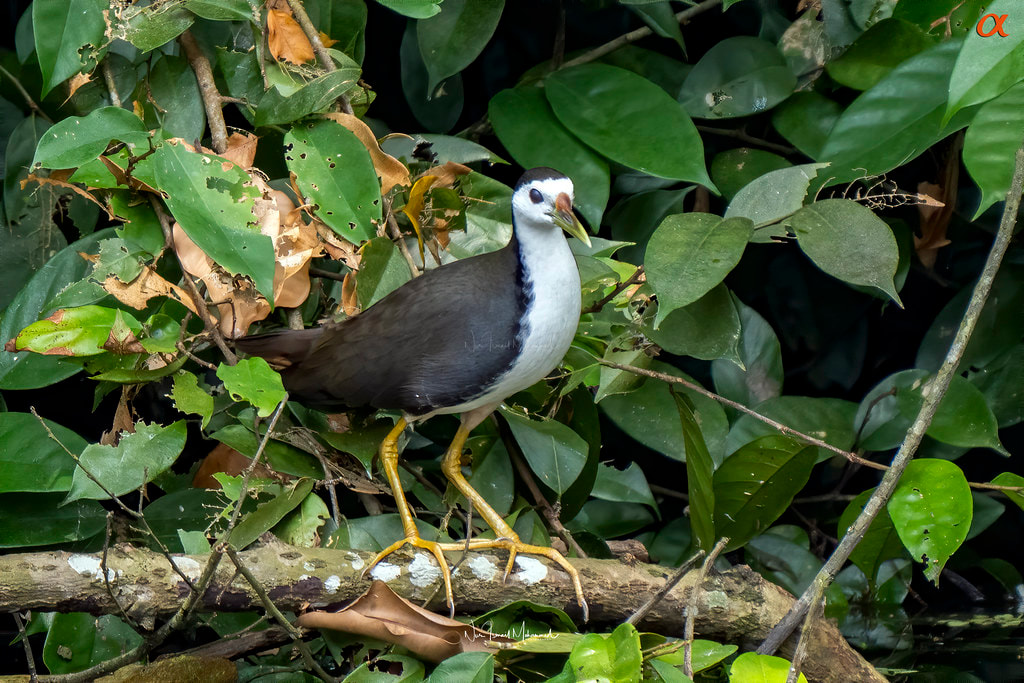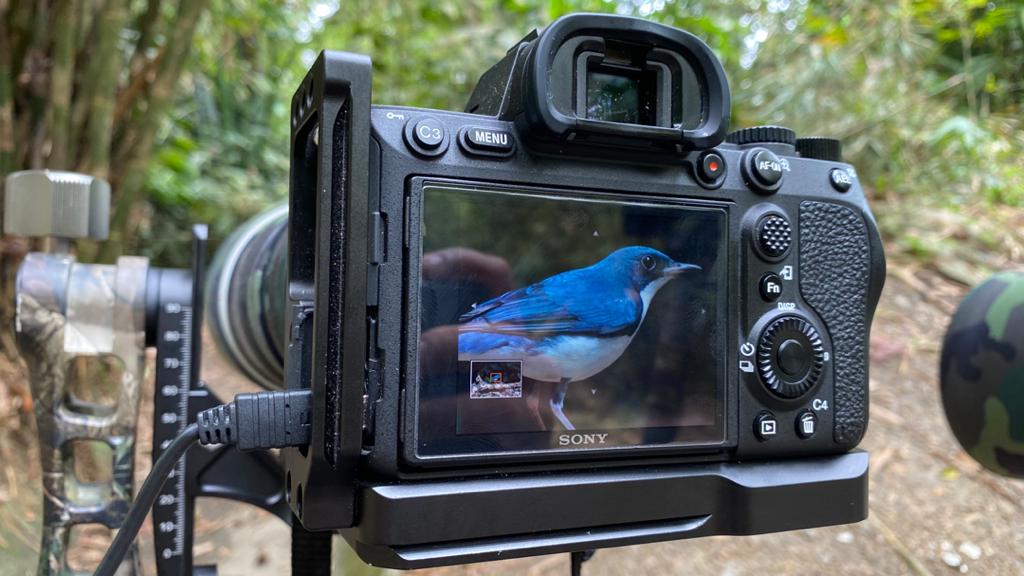|
I had the opportunity to go on a full birding trip with Dr. Shaharudin Abdullah and guided by Khairulikhwan Matnin to Kinabalu National Park (KNP) on 17 March 2020. Khairulikhwan picked us up from H. Benjamin Residence at 5:30am. We arrived at KNP around 6:00am, just in time for sunrise. We started at the Timpohon Gate and work our way down to the KNP entrance. Among the birds photographed was the Whitehead's broadbill, Golden-naped barbet, Bornean green magpie, Bornean forktail, Bornean whistler, Indigo flycatcher, Bornean whistlingthrush, Sunda laughingthrush & Bornean treepie. Whitehead's broadbill (Calyptomena whiteheadi) is a species of bird in the family Calyptomenidae. It is restricted to montane forests in northern Borneo. It is the largest species in the genus Calyptomena and is named after the British explorer John Whitehead (1860–1899) who collected specimens and studied natural history in Borneo and elsewhere in southeast Asia. [Source: Wikipedia] Name: Whitehead's broadbill Scientific: Calyptomena whiteheadi Malay: Seluwit Whitehead / Seluwit Rungkung Hitam Family: Calyptomenidae IUCN Red List (v3.1, 2016): Least Concern Gear: SONY a9 + SEL200600G The golden-naped barbet (Psilopogon pulcherrimus) is a member of the family Megalaimidae. It is found in Indonesia and Malaysia, where it is endemic to the island of Borneo. Its natural habitats are subtropical or tropical moist lowland forest and subtropical or tropical moist montane forest. Medium-sized bird (20-21.5 cm); overall stocky built. Bill- thick and distinctive. Body coloration, primarily green. Wings having darker shade of green compared to underparts. Azure blue on forehead, extending up to nape; blue coloration on throat. Small but distinct yellow nape forms a collar. A distinctive black band from the base of bill to eye, Black pupils, Black mandibles, Greyish green tarsus. [Source: Wikipedia]. Name: Golden-naped barbet Scientific: Psilopogon pulcherrimus Malay: Takur Tengkuk Emas / Takur Topeng Hitam Gunung Family: Megalaimidae IUCN Red List (v3.1, 2016): Least Concern Gear: SONY a9 + SEL200600G. Cissa jefferyi or Bornean Green Magpie belongs to the crow family Corvidae. This bird species is endemic to the island of Borneo hence the common name Bornean Green Magpie where it occurs in foothill and montane forest. In Malaysia, sightings of this bird have been recorded in Mount Kinabalu, Sabah. The adult Bornean Green Magpie has bright green crown and upperparts, maroon-red wings, black mask from its lores extending through its eyes to its nape, bright green underparts and bright pinkish-red bill and legs. In comparison with other magpies, the Bornean Green Magpies has whitish eyes with red eye rims instead of dark reddish-brown eyes in species from the same genus Cissa. This species feeds on mostly invertebrates and small vertebrate. [Source: Wikipedia]. Name: Bornean green magpie Scientific: Cissa jefferyi Malay: Gagak Gunung Borneo Family: Corvidae IUCN Red List (v3.1, 2016): Least Concern Gear: SONY RX10M4 The white-crowned forktail (Enicurus leschenaulti) is a species of forktail in the family Muscicapidae. Scientifically described in 1818, it has six subspecies, each occupying a different geographic range. The largest of the forktails, Enicurus leschenaulti, is between 25 and 28 centimetres (9.8 and 11.0 in) long. It has a black throat and breast, black mantle, and largely black wings. The rump and lower back are white, and the bird has a prominent white crown, from which it gets its name. As with other forktails, the tail is long, deeply forked, and banded in black and white. A variety of whistling and clicking calls have been described. Slight morphological differences have been observed between subspecies. A shy bird, the white-crowned forktail stays near water, and forages on the edges of rivers and streams for invertebrates. Its breeding season is between March and September, and possibly extends till October. Its nests are also built near the water, and are constructed of plant material. The eggs are between two and five in number, though there is latitudinal variation. Multiple broods in a year have been observed in China. The white-crowned forktail is found in China, Southeast Asia and also in northeastern parts of the Indian subcontinent. Its natural habitats are subtropical or tropical moist lowland forests and subtropical or tropical moist montane forests. Its elevational range varies across its range, from a minimum of 185 metres (607 ft) above sea level to a maximum of 2,400 metres (7,900 ft). It is categorized as a species of least concern by the International Union for Conservation of Nature. [Source: Wikipedia]. Name: White-crowned forktail / Bornean forktail Scientific: Enicurus leschenaulti Malay: Cegar Dahi Putih Borneo / Cegar Ubun Putih / Murai Cegar Belukar Family: Muscicapidae IUCN Red List (v3.1, 2016): Least Concern Gear: SONY a9 + SEL200600G The Bornean whistler (Pachycephala hypoxantha) or Bornean mountain whistler, is a species of bird in the family Pachycephalidae. It is endemic to the island of Borneo. [Source: Wikipedia]. Name: Bornean whistler Scientific: Pachycephala hypoxantha Malay: Murai Siul Emas Borneo / Sambar Siul Mas Family: Pachycephalidae IUCN Red List (v3.1, 2017): Least concern Gear: SONY RX10M4 The indigo flycatcher is a species of bird in the Old World flycatcher family Muscicapidae. It is found in Indonesia and Malaysia, where it is found in Sumatra, Java and northern montane areas of Borneo. Its natural habitat is tropical moist submontane montane forests between 900m to 3000m, where it is a common to fairly common species. [Source: Wikipedia]. Name: Indigo flycatcher Scientific: Eumyias indigo Malay: Sambar Ranting Sunda Family: Muscicapidae IUCN Red List (v3.1, 2017): Least concern Gear: SONY a7RIV + SEL200600G. The Bornean whistling thrush (Myophonus borneensis) is a species of bird in the family Muscicapidae. It is found in Indonesia and Malaysia, where it is endemic to the island of Borneo. Its natural habitat is subtropical or tropical moist montane forests. [Source: Wikipedia]. Name: Bornean whistling-thrush Scientific: Myophonus borneensis Malay: Tiong Belacan Borneo / Tiong Biru Borneo Family: Muscicapidae IUCN Red List (v3.1, 2016): Least concern Gear: SONY a9 + SEL200600G. The Sunda laughingthrush is a species of bird in the family Leiothrichidae. It is found in Brunei, Indonesia, and Malaysia. Its natural habitats are subtropical or tropical moist lowland forests and subtropical or tropical moist montane forests. It is threatened by human activity such as hunting, logging, and trapping. [Source: Wikipedia]. Name: Grey-and-brown laughingthrush / Sunda laughingthrush Scientific: Garrulax palliatus Malay: Kekicau Raya Cenuk Kerak Family: Leiothrichidae IUCN Red List (v3.1, 2016): Near Threatened Gear: SONY a9 + SEL200600G. The Bornean treepie (Dendrocitta cinerascens) is a passerine bird belonging to the treepies genus, Dendrocitta, of in the crow family, Corvidae. It is endemic to the island of Borneo. It is sometimes treated as a subspecies of the Sumatran treepie (D. occipitalis). It is a fairly large bird, 40 centimetres in length, including a long graduated tail, broad rounded wings and short weak legs. The underparts are pinkish-brown. The head is also pinkish-brown with a pale silver crown and a dark stripe over the eye and across the forehead. The back is greyish and the rump is pale. The wings are black with a white patch and the tail is grey with black tips to the feathers. The bill and legs are grey-black and the eyes are reddish. The Sumatran treepie differs in having a pale brown back, a dark brown head with a white nape and a thinner bill. The Bornean treepie is a noisy bird with a variety of loud, explosive calls including a bell-like whistle and various grunting and chattering calls. It is able to mimic the calls of other birds. [Source: Wikipedia]. Name: Bornean treepie Scientific: Dendrocitta cinerascens Malay: Gagak Borneo Family: Corvidae IUCN Red List (v3.1, 2017): Least concern Gear: SONY a7RIV + SEL200600G #FullFrameLife #MySONYLife #sony #sonymalaysia #AlphaUniverseMY #a9 #a7RIV #SEL200600G #SEL14TC #alpha #NurIsmailPhotography #madebyluminar #skylum #skylummalaysia #luminar #topazlabs
Copyright © 2020 Nur Ismail Photography. All rights reserved. Do not use or reproduce these images on websites, blogs or publications without expressed written permission from the photographer.
0 Comments
Today, the whole family went on a trip to Kinabalu National Park (KNP), guided by Khairulikhwan Matnin, the leading bird guide in Sabah. We started at around 8:30am and work our way from Timpohon Gate to the KNP Visitor Center. The family trip ended around 1:00pm. Among the birds photographed were Whitehead's trogon, Grey-chinned minivet, Chestnut-hooded laughingthrush and Little pied flycatcher. Harpactes whiteheadi is a medium-sized trogon measuring up to 33 cm long and is commonly known as Whitehead’s trogon. This is the only trogon in Borneo with a red head and diagnostic (a distinct characteristic) on the male. The male Whitehead's trogon also has a blue bill and orbital rings, black throat, grey breast and red belly. The upperparts are pale rich brown and the under tail is white. In comparison, the female Whitehead's trogon has a dull cinnamon head and belly instead of red. This trogon species mainly feeds on insects such as grasshoppers, ants and leaf insects. The Whitehead’s trogon is endemic to Borneo and is restricted to primary forests above 1000 m elevation. Due to a restricted range of distribution and habitat degradation, the Whitehead’s trogon is listed from Least Concern to Near Threatened in 2004 by the IUCN Red List. [Source: MyBIS]. Name: Whitehead's trogon (male) Scientific: Harpactes whiteheadi Malay: Kesumba Whitehead Family: Trogonidae IUCN Red List (v3.1, 2016): Near threatened Gear: SONY a7RIV + SEL200600G. Pericrocotus solaris or the Mountain Minivet, is one of the birds’ species that can be found in hill and montane forest, about 800m upwards. This species also called as Gray-chinned Minivet. Its behaviour is similar to other minivets species, whether moving in small parties or more often in pairs. Their diet consists of small invertebrates. The male and female of P. solaris are different with each other in term of plumage colour. The male has an ashy grey head including the back, ear-coverts and cheeks, a black line through the eye, and black central tail feathers. Its underparts, lower back, rump and sides of the tail are bright reddish orange. The bill and legs are black. While for female, the black areas are replaced by dark gray-brown, the lower back and rump are greenish-yellow, and the wing patch and underparts are bright yellow. [Source: MyBIS] Name: Grey-chinned minivet (female) Scientific: Pericrocotus solaris Malay: Burung Matahari Gunung / Minivet Dagu-kelabu Family: Campephagidae IUCN Red List (v3.1, 2016): Least concern Gear: SONY a7RIV + SEL200600G The chestnut-hooded laughingthrush is a species of bird in the family Leiothrichidae. It is found in Borneo. Its natural habitats are subtropical or tropical moist lowland forests and subtropical or tropical moist montane forests. It used to be considered a subspecies of the chestnut-capped laughingthrush. [Source: Wikipedia]. Name: Chestnut-hooded laughingthrush Scientific: Ianthocincla treacheri Malay: Kekicau Raya Borneo / Rimba Genting Family: Leiothrichidae IUCN Red List (v3.1, 2017): Least concern Gear: SONY a7RIV + SEL200600G The little pied flycatcher is a species of bird in the family Muscicapidae. It is found in the Indian Subcontinent and Southeast Asia, ranging across Bangladesh, Bhutan, Cambodia, India, Indonesia, Laos, Malaysia, Myanmar, Nepal, the Philippines, Thailand, and Vietnam. Its natural habitats are subtropical or tropical moist lowland forest and subtropical or tropical moist montane forest. [Source: Wikipedia]. Name: Little pied flycatcher (female) Scientific: Ficedula westermanni Malay: Sambar Gunung / Sambar Kecil Hitam Putih Family: Muscicapidae IUCN Red List (v3.1, 2016): Least concern Gear: SONY a7RIV + SEL200600G. #FullFrameLife #MySONYLife #sony #sonymalaysia #AlphaUniverseMY #a7RIV #SEL200600G #SEL14TC #alpha #NurIsmailPhotography #madebyluminar #skylum #skylummalaysia #luminar #topazlabs
Copyright © 2020 Nur Ismail Photography. All rights reserved. Do not use or reproduce these images on websites, blogs or publications without expressed written permission from the photographer. We took a trip to Poring Hot Spring in Ranau, Sabah on 15 March 2020. The trip was guided by Khairulikhwan Matnin, the leading bird guide in Sabah. We started the journey early and arrived at Poring around 9:00am. We spend the whole morning until noon where we break for lunch. Among the birds photographed at Poring Hot Spring were Rufous-collared kingfisher, Oriental-dwarf kingfisher, Little cuckoo dove, Fulvous-chested jungle-flycatcher and Red-bearded bee-eater. Actenoides concretus is commonly known as the rufous-collared kingfisher. The adult has medium size with a proportioned head. The rufous-collared kingfisher has a shaggy crest, large and thick bill, blue head and back, and white throat and collar. It's underbody is white and has blue band across its chest. Both male and female has a slight differences appearance, where the male does not have the rufous band across its white abdomen, but present in its flanks. An addition for the female, some feather tips along the blue breast are rufous. Their diet includes fishes, insects, scorpions and small snakes. The rufous-collared kingfisher is confined to the Sundaic lowlands, which include Malaysia, Myanmar, Indonesia, Thailand and Brunei Darussalam (Jeyarajasingam & Pearson, 2012). It was regionally extinct in Singapore. Its habitat constitutes the closed canopy forest and regenerating logged forest. Due to forest loss, forest fires and land conversion, this species is listed as Near Threatened in the IUCN Red List (BirdLife International, 2016). [Source: MyBIS]. Name: Rufous-collared kingfisher Scientific: Actenoides concretus Malay: Pekaka Rimba Besar / Pekaka Tengkuk Perang Family: Alcedinidae IUCN Red List (v3.1, 2016): Near Threatened Gear: SONY a7RIV + SEL200600G. The Oriental dwarf kingfisher (Ceyx erithaca), also known as Black-backed kingfisher or pekaka rimba in Malay is the smallest kingfisher belonging to the Alcedinidae family. Its size can be measured about 14 cm in length (Strange & Jeyarajasingam, 1993). It prefers habitat, where it was usually found, includes areas such as small streams in densely shaded, lowland forests. Like other kingfishers, the oriental dwarf kingfisher has bright colours, with a large and strong bill. It is easily recognised by the deep yellow colours on its lores and face, bright blue crown with violet on the sides of its orange head, bluish-black with glossy blue lines upper plumage, orange-yellow under plumage and a white throat with bright orange coloured lines in the bottom. The bill and feet are orangey-red. Both males and females look alike while its juveniles' plumage is duller in colours. Instead of fish which is the typical diet of the kingfisher, this species mainly feeds on insects, as well as small lizards or frogs. Before eating, it kills them by holding them in the beak and continually hitting them against a stone or tree stump (Jeyarajasingam et al., 2016). [Source: Wikipedia]. Name: Oriental-dwarf kingfisher Scientific: Ceyx erithaca Malay: Pekaka Sepah Family: Alcedinidae IUCN Red List (V3.1, 2016): Least Concern Gear: SONY a7RIV + SEL200600G. The fulvous-chested jungle flycatcher (Cyornis olivaceus) is a species of bird in the Old World flycatcher family Muscicapidae. It is found in Brunei, Indonesia, Malaysia, Myanmar, and Thailand. Its natural habitat is subtropical or tropical moist lowland forests. This species was previously placed in the genus Rhinomyias but was moved to Cyornis based on the results of a 2010 molecular phylogenetic study. [Source: Wikipedia]. Name: Fulvous-chested jungle-flycatcher Scientific: Cyornis olivaceus Malay: N/A Family: Muscicapidae Gear: SONY a7RIV + SEL200600G. Nyctyornis amictus is a medium-sized but considerably large species in the bee-eater family. N. amictus is locally known as the red-bearded bee-eater based on its massive build and red “beard”. The male has a lilac forehead, bright green plumage, throat and crimson shaggy breast. The female is almost like the male but differ by its red forehead. Both sexes have two common characters, in which both have a pale orange yellow underside of the tail, broad blackish terminal band and the entire head and underparts of the juvenile is mostly green. The population for this bee-eater occurs in southern Thailand, Myanmar, Malaysia and Brunei. In Malaysia, it is a locally common resident that can be found at low elevations up to 1,300m. Commonly, the red-bearded bee-eater hawks insect at the forest edges. [Source: MyBIS]. Name: Red-bearded bee-eater Scientific: Nyctyornis amictus Malay: Berek-berek Janggut Merah / Beberek Tunggal Family: Meropidae IUCN Red List (v.3.1, 2016): Least concern Gear: SONY a7RIV + SEL200600G. #FullFrameLife #MySONYLife #sony #sonymalaysia #AlphaGuru #AlphaUniverseMY #alpha #a7RIV #SEL200600G #NurIsmailPhotography #madebyluminar #skylum #skylummalaysia #luminar #topazlabs #drgambar
Copyright © 2020 Nur Ismail Photography. All rights reserved. Do not use or reproduce these images on websites, blogs or publications without expressed written permission from the photographer. Assalamualaikum and a very good day to all. I had the opportunity to take a short trip to Taiping on Friday evening, 06.03.2020. Since it was a rainy Friday evening, traffic was horrendous as it took me more than 30min just to reach the Jalan Duta toll from home. The journey overall took 3hr 30min, after a 30-min break in Tapah R&R for dinner. It was raining all the way from KL to Tapah. I safely arrived in Taiping by 10:00pm and retired for the night. The birding session starts at 8:00am to 2 locations around foot of Bukit Larut (Maxwell Hill) and further 2 locations around Taiping Lake Gardens in the afternoon. By the time I'm done with birding, it was 6:00pm. I was guided by a friend, En. Sidek, throughout the birding session. We managed to photograph the elusive Banded kingfisher during this trip, however, failed to shoot the Rufous-collared kingfisher. Managed to capture 9 lifers during this trip. Alhamdulillah. I drove back to KL on Sunday 08.03.2020 morning and managed to arrive in KL by noon. The following are some of the images captured in Taiping. The banded kingfisher (Lacedo pulchella) is a tree kingfisher found in lowland tropical forests of southeast Asia. It is the only member of the genus Lacedo. Male and female adults are very different in plumage. The male has a bright blue crown with black and blue banding on the back. The female has rufous and black banding on the head and upperparts. This is a bird of lowland rainforest found up to 1,700 m in Brunei, but normally below 1100 m altitude in the rest of its range. Unlike most kingfishers, it does not need pools or streams in its territory. The nest is a hole in a rotting tree trunk, or sometimes in the spherical nest of tree termites. Two to five white eggs are laid. In Thailand the eggs are laid between February and May. The banded kingfisher hunts large insects and occasionally small lizards, usually taken in the trees, but sometimes from the ground. [Source: Wikipedia]. Name: Banded kingfisher (male) Scientific: Lacedo pulchella Malay: Pekaka Rimba Family: Alcedinidae IUCN Red List (v3.1, 2016): Least Concern Gear: SONY a7RIV + SEL200600G. The Siberian blue robin (Larvivora cyane) is a small passerine bird that was formerly classified as a member of the thrush family, Turdidae, but is now more generally considered to belong to the Old World flycatcher family, Muscicapidae. It and similar small European species are often called chats. Recent research suggests that this species and some other East Asian members of Luscinia should be classified in a new genus, together with the Japanese and Ryūkyū robins. The genus name Larvivora comes from the new Latin larva meaning caterpillar and -vorus meaning eating (vorace to devour), and cyane is Latin for "dark-blue". This bird is a migratory insectivorous species breeding in the eastern Palearctic from Siberia and northern Mongolia, northeastern China, Korea and across to Japan. It winters in southern and south-eastern Asia and Indonesia. The breeding habitat is coniferous forest with dense undergrowth, often beside rivers or at woodland edges. It feeds on the ground but is very 'skulking'. In winter, this bird also tends to stay in dense vegetation. [Source: Wikipedia]. Name: Siberian blue robin Scientific: Larvivora cyane Malay: Murai Biru Siberia Family: Muscicapidae IUCN Red List (v3.1, 2016): Least Concern Gear: SONY a7RIV + SEL200600G + SEL14TC. The banded broadbill (Eurylaimus javanicus) is a species of bird in the family Eurylaimidae. It is found in Brunei, Cambodia, Indonesia, Laos, Malaysia, Myanmar, Singapore, Thailand, and Vietnam. Its natural habitat is subtropical or tropical moist lowland forests. It is a large broadbill (21.5–23 cm), with purple, yellow and black plumage. It eats predominantly insects, including grasshoppers, crickets, katydids, various beetles, caterpillars and larvae. [Source: Wikipedia]. Name: Banded broadbill Scientific: Eurylaimus javanicus Malay: Takau Belang / Takau Rimba Family: Eurylaimidae IUCN Red List (v3.1, 2016): Near Threatened Gear: SONY a7RIV + SEL200600G + SEL14TC. The black-and-yellow broadbill (Eurylaimus ochromalus) is a species of bird in the family Eurylaimidae. It is found in Brunei, Indonesia, Malaysia, Myanmar, Singapore, and Thailand. Its natural habitats are subtropical or tropical moist lowland forest and subtropical or tropical moist montane forest. It is threatened by habitat loss. The black-and-yellow broadbill could be mistaken for its cousin, the Banded broadbill , due to their similar coloring of black wings with yellow markings and bright blue beaks. However, the black-and-yellow (Eurylaimus ochromalus) has a pink chest and yellow belly, a black head, and a white collar. The black-and-yellow broadbill feeds primarily on insects, especially orthopterans (grasshoppers, cicadas, etc.), mantises, and beetles. [Source: Wikipedia]. Name: Black-and-yellow broadbill Scientific: Eurylaimus ochromalus Malay: Takau Hitam Kuning Family: Eurylaimidae IUCN Red List (v3.1, 2017): Near Threatened Gear: SONY a7RIV + SEL200600G + SEL14TC. The green-backed flycatcher (Ficedula elisae) is a bird in the family Muscicapidae, which contains the Old World flycatchers. It was long considered to a subspecies of the narcissus flycatcher, but morphological and acoustical differences between the two indicate they are instead separate species. It breeds in northeastern China and winters in southeast Asia. [Source: Wikipedia]. Name: Green-backed flycatcher (female) Scientific: Ficedula elisae Malay: Sambar Belakang-hijau Family: Muscicapidae IUCN Red List (Ver3.1, 2016): Least Concern Gear: SONY a7RIV + SEL200600G + SEL14TC. The orange-headed thrush (Geokichla citrina) is a bird in the thrush family. It is common in well-wooded areas of the Indian Subcontinent and Southeast Asia. Most populations are resident. The species shows a preference for shady damp areas, and like many Zoothera thrushes, can be quite secretive. The orange-headed thrush is omnivorous, eating a wide range of insects, earthworms and fruit. It nests in trees but does not form flocks. The male of this small thrush has uniform grey upperparts, and an orange head and underparts. The females and young birds have browner upper parts. [Source: Wikipedia]. Name: Orange-headed thrush Scientific: Geokichla citrina Malay: Murai Belanda / Murai Dada Oren Family: Turdidae IUCN Red List (v3.1, 2016): Least Concern Gear: SONY a7RIV + SEL200600G + SEL14TC. The Raffle's malkoha (Rhinortha chlorophaea) is a species of cuckoo (family Cuculidae). It was formerly often placed in Phaenicophaeus with the other malkohas, but it is a rather distinct species, with several autapomorphies and sexual dimorphism (which its presumed relatives all lack). It might not even be very closely related to the true malkohas, but form a very basal lineage of cuckoos; in any case, its placement in a monotypic genus Rhinortha is well warranted. It is found in Brunei, Indonesia, Malaysia, Myanmar, Singapore, and Thailand. Its natural habitat is subtropical or tropical moist lowland forests. [Source: Wikipedia] Name: Raffles's malkoha Scientific: Rhinortha chlorophaea Malay: Cenuk Kecil / Cenuk Kerak Family: Muscicapidae IUCN Red List (v.3.1, 2016): Least Concern Gear: SONY a7RIV + SEL200600G + SEL14TC. The blue-winged leafbird (Chloropsis cochinchinensis) is a species of leafbird found in forest and second growth throughout Southeast Asia as far east as Borneo and as far south as Java. It previously included Jerdon's leafbird (C. jerdoni) from the Indian Subcontinent, and the Bornean leafbird (C. kinabaluensis) from northern Borneo as subspecies, but differs from both in measurements and morphology, with Jerdon's lacking any blue to the flight feathers, and Bornean having a distinctive male-like female plumage. The distribution of the blue-winged and the Bornean leafbird are known to approach each other, but there is no evidence of intergradation. C. c. viridinuchaThe male is green-bodied with a yellow-tinged head, black face and throat. It has a blue moustachial line. The female differs in that it has a greener head and blue throat, and young birds are like the female but without the blue throat patch. [Source: Wikipedia]. Name: Blue-winged leafbird Scientific: Chloropsis cochinchinensis Malay: Burung Daun Sayap Biru Family: Chloropseidae IUCN Red List (v3.1 2019): Endangered Gear: SONY a7RIV + SEL200600G + SEL14TC. The oriental pied hornbill (Anthracoceros albirostris) is an Indo-Malayan pied hornbill, a large canopy-dwelling bird belonging to the family Bucerotidae. Two other common names for this species are Sunda pied hornbill (convexus) and Malaysian pied hornbill. The species is considered to be among the smallest and most common of the Asian hornbills. It has the largest distribution in the genus and is found in the Indian Subcontinent and throughout Southeast Asia. Its natural habitat is subtropical or tropical moist lowland forests. The oriental pied hornbill's diet includes fruit, insects, shellfish, small reptiles and, sometimes, small mammals and birds including their eggs. [Source: Wikipedia]. Name: Oriental pied hornbill Scientific: Anthracoceros albirostris Malay: Enggang Kelingking / Enggang Belulang / Burung Lilin Family: Bucerotidae IUCN Red List (v3.1, 2016): Least Concern Gear: SONY a7RIV + SEL200600G. The blue-crowned hanging parrot (Loriculus galgulus) is a small (length: 13 cm (5.1 in)) mainly green parrot found in forested lowlands in southern Burma and Thailand, Malaya, Singapore, and Indonesia (Sumatra, Java, Borneo). Blue-crowned hanging parrots are mostly green and the adults have black beaks. Adult males have a blue crown, red throat, red rump, and a yellow lower back. Adult females are duller than males and lack the yellow lower back, usually lack the red throat, and the blue crown is much less noticeable. The juvenile is duller than the female, and has a grey forehead and horn-coloured beak. [Source: Wikipedia] Name: Blue-crowned hanging-parrot Scientific: Loriculus galgulus Malay: Bayan Kecil / Bayan Serindit Family: Psittacidae IUCN Red List (v3.1, 2016): Least Concern Gear: SONY a7RIV + SEL200600G + SEL14TC. 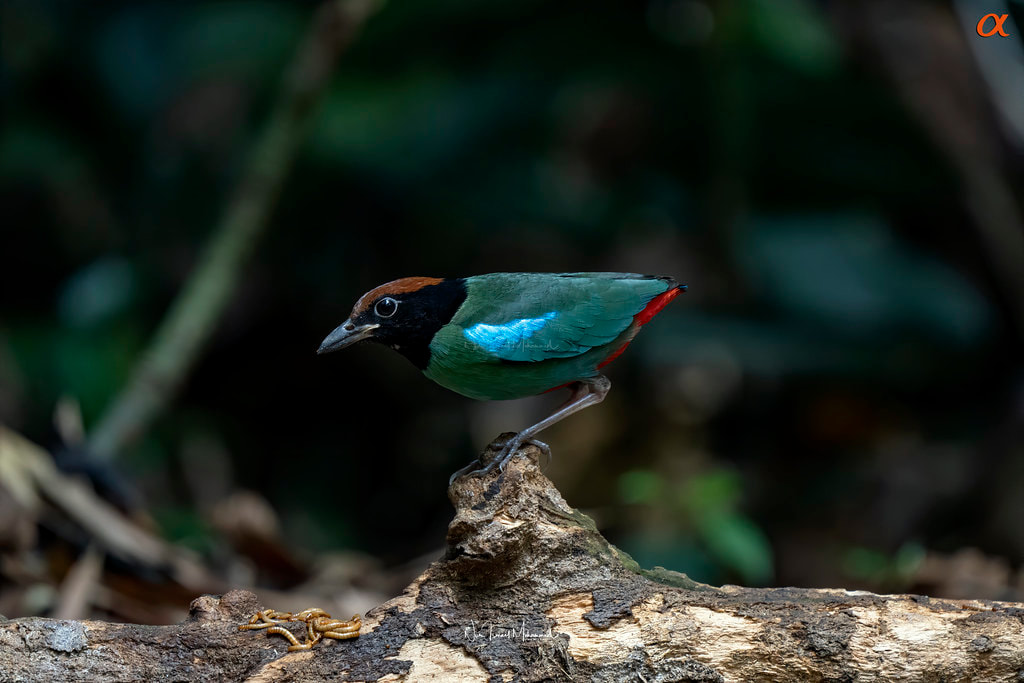 The hooded pitta (Pitta sordida) is a passerine bird in the family Pittidae. It is common in eastern and southeastern Asia and maritime Southeast Asia, where it lives in several types of forests as well as on plantations and other cultivated areas. It is a green bird with a black head and chestnut crown. It forages on the ground for insects and their larvae, and also eats berries. It breeds between February and August, the pair being strongly territorial and building their nest on the ground. Incubation and care of the fledglings is done by both parents. The bird has a wide range, and the International Union for Conservation of Nature has assessed its conservation status as being of "least concern". [Source: Wikipedia]. Name: Hooded pitta Scientific: Pitta sordida Malay: Burung Pacat Hijau / Berlau Bertudung / Pacat Gembala Pelanduk Family: Pittidae IUCN Red List (v.3.1, 2016): Least Concern Gear: SONY a7RIV + SEL200600G. The pied triller (Lalage nigra) is a species of bird in the family Campephagidae. It is found in Brunei, India, Indonesia, Malaysia, the Philippines, Singapore, and Thailand. [Source: Wikipedia] Name: Pied triller Scientific: Lalage nigra Malay: Kuang Kuit / Rembah Kening Putih / Selancang Hitam Putih / Sewah Kapas Family: Campephagidae IUCN Red List (v3.1, 2016): Least Concern Gear: SONY a7RIV + SEL200600G + SEL14TC. The white-breasted waterhen (Amaurornis phoenicurus) is a waterbird of the rail and crake family, Rallidae, that is widely distributed across South and Southeast Asia. They are dark slaty birds with a clean white face, breast and belly. They are somewhat bolder than most other rails and are often seen stepping slowly with their tail cocked upright in open marshes or even drains near busy roads. They are largely crepuscular in activity and during the breeding season, just after the first rains, make loud and repetitive croaking calls. [Source: Wikipedia]. Name: White-breasted waterhen Scientific: Amaurornis phoenicurus Malay: Wak-wak / Ruak-ruak Family: Rallidae IUCN Red List (v3.1, 2016): Least Concern Gear: SONY a7RIV + SEL200600G + SEL14TC. The gears used during this trip is SONY a7RIV + SEL200600G + SEL14TC, mounted on the Leofoto LS-365 carbion fibre tripod + Leofoto PG-1 tripod gimbal.
Coming up is my main birding trip for 2020, Kinabalu National Park, next week. Stay tuned. #FullFrameLife #MySONYLife #sony #sonymalaysia #a7RIV #SEL200600G #SEL14TC #alpha #AlphaGuru #NurIsmailPhotography #madebyluminar #skylum #skylummalaysia #luminar #topazlabs |
AuthorThis is the photography journey of Nur Ismail Photography where all the experiences from this year onwards will be shared with the audience. In collaboration with NiSi Malaysia, Leofoto, SONY Malaysia and Skylum Software. Thanks for viewing! Archives
August 2022
Categories |
